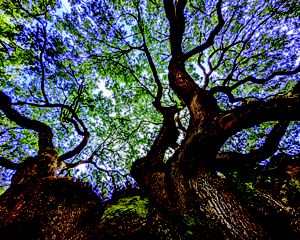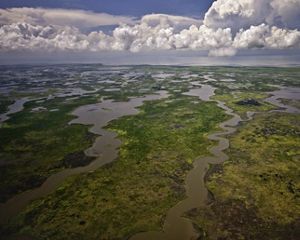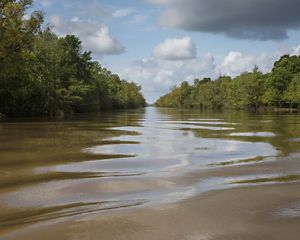Louisiana Conservation News
Recent accomplishments from around the Pelican State.
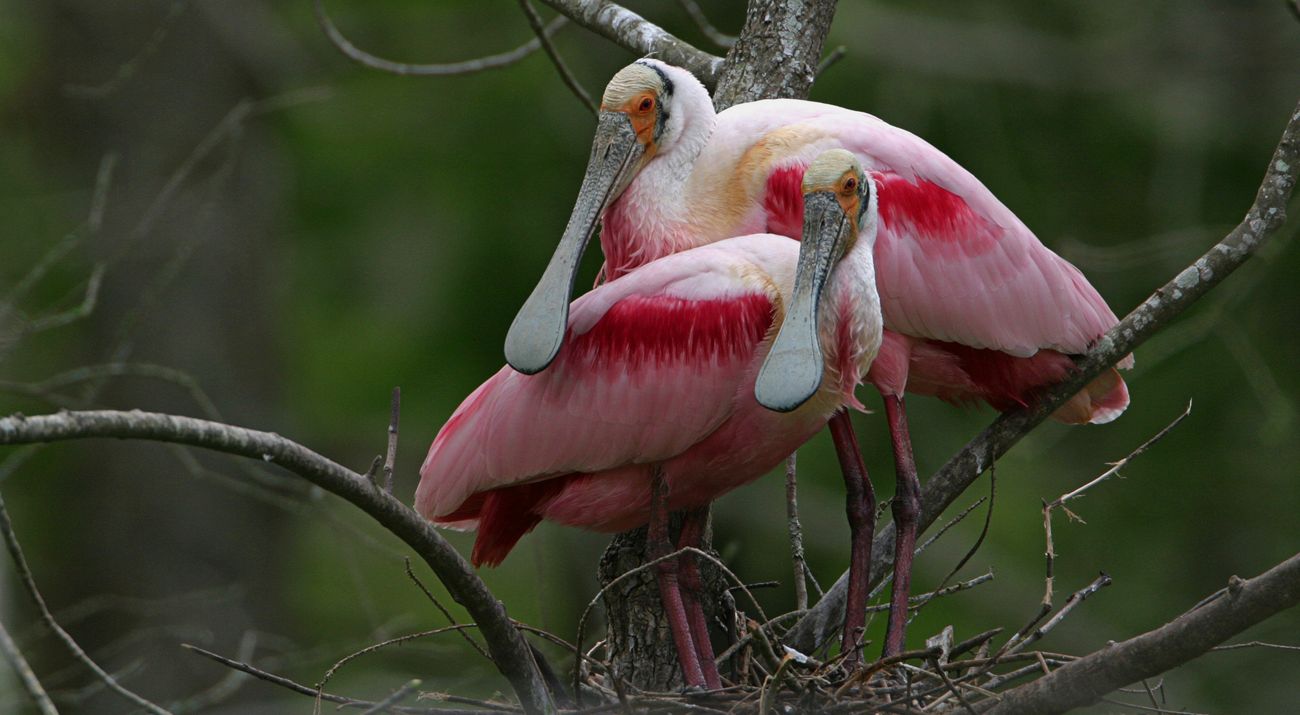
Thanks for visiting our conservation newsroom. We hope you’ll visit often to stay informed about conservation projects and big wins that we are reporting from around Louisiana.
Check out our most recent accomplishments from the Pelican State.

November 21, 2025
A prehistoric discovery provides another reason to protect Louisiana's natural areas.
Are we in Louisiana? Or are we in Jurassic Park?
During a recent foray at a TNC preserve, something caught the attention of a staff member in an exposed patch of earth along a streambank wall. Just peeking out of the earth was a small, tooth-shaped and tooth-sized object. Being conservationists, our thoughts turned, of course, to wildlife. It turns out, we were right. The discovery did match up with the local wildlife . . . from approximately 35 million years ago!
Specifically, the object was a fossil of an ancient whale tooth from the late Eocene period, a time when most of what is now Louisiana was beneath a shallow sea.
“The brown is the enamel portion of the tooth. The root portion of the tooth is missing, which is very common,” says Dr. Gary Stringer, professor emeritus of Geology at University of Louisiana at Monroe. “The curvature of the specimen and the lack of serrations are indicative of an incisor.”
The early Eocene saw the evolution of the first whales on earth; by the late Eocene, these creatures were widespread, diverse and major players in many marine ecosystems worldwide. According to Dr. Stringer, two primitive whales populated these Louisiana waters during the Eocene: Basilosaurus cetoides and Zygorhiza kochii. Both of these whales were large, powerful predators. Basilosaurus is thought to have reached 56-feet to 66-feet long and weighed up to 15 tons. Based on the size of the tooth, Dr. Stringer assigned the fossil to the latter, Zygorhiza, a smaller whale though still roughly the size of an unusually large great white shark (whose ancestors also first appeared in the Eocene).
Dr. Stringer also looked at other seemingly prehistoric items collected on this day, speculating that one was either calcareous material once common on the bottom of Eocene seas or a very worn shark coprolite (also known as fossilized dung). Stringer identified additional specimens as a piece of bone, maybe even part of a whale rib, a likely coral, and a bivalve or mollusk. He qualified that more definitive conclusions would need to be pursued in a laboratory setting.
“I really enjoy identifying fossils for people,” adds Stringer. “It makes them more ‘alive’ and important.”
For our Nature Conservancy staff, discoveries like these add even more meaning to our work, protecting remnants of our state’s deep past, which have formed the diverse and important ecosystems on which we rely today.
(Please Note: We are purposefully not identifying the location where our staff found these fossils, as the area is undergoing restoration and we do not want to encourage fossil hunters to dig there.)
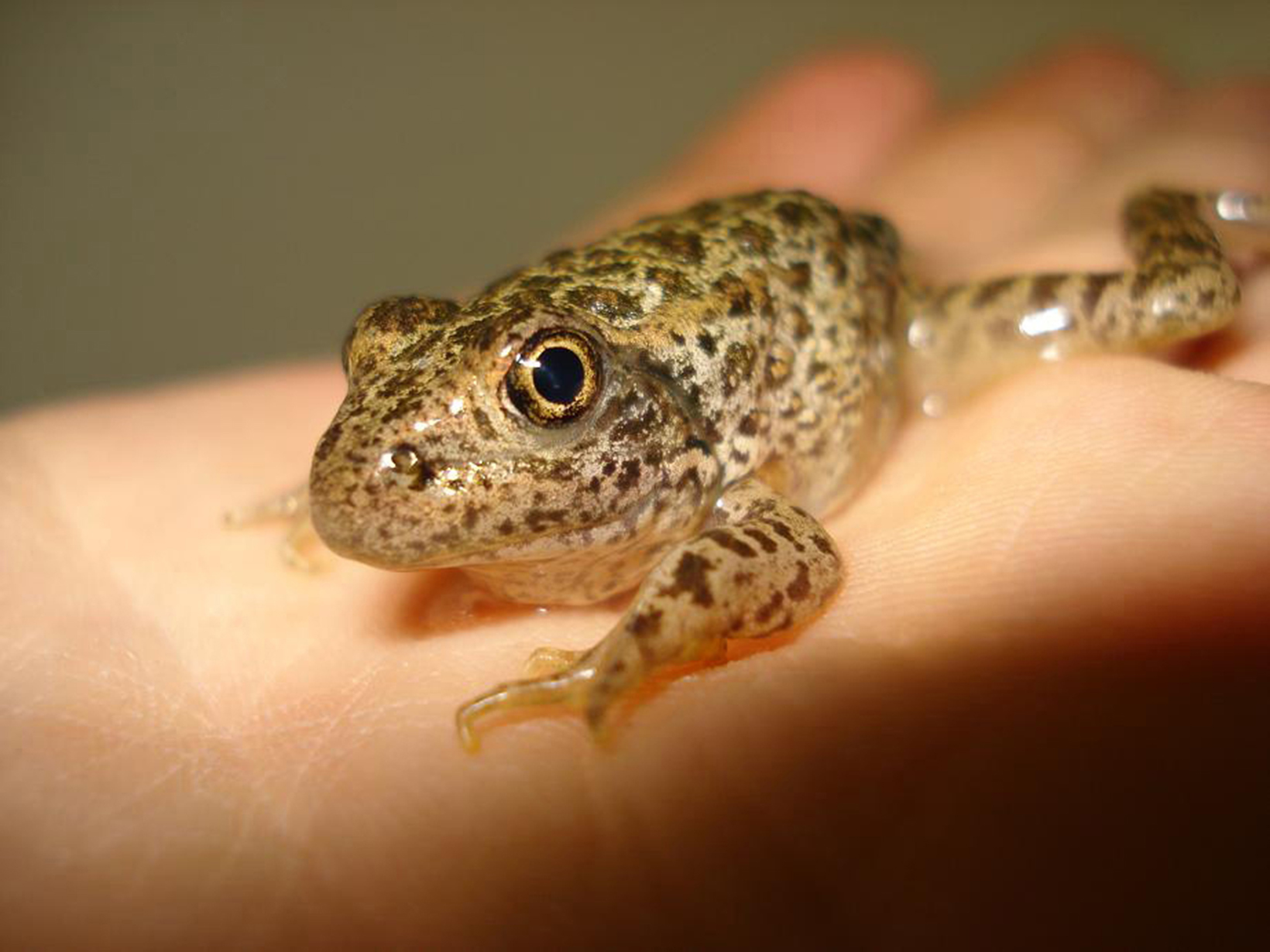
October 24, 2025
TNC begins habitat restoration to bring back the endangered dusky gopher frog.
The deep, bellowing call of a federally endangered, three-inch-long frog may one day be heard in TNC’s Talisheek Pine Wetlands Preserve in St. Tammany Parish thanks to a major habitat restoration project that kicked off this month. The work will restore shallow ponds in the landscape needed for the survival of the imperiled dusky gopher frog (Lithobates sevosus).
Native to parts of Louisiana, Mississippi and Alabama, the dusky gopher frog today only survives at a handful of locations in south Mississippi. The species’ decline is primarily due to the loss of longleaf pine habitat, a fire-dependent ecosystem that has gradually disappeared throughout the southeastern United States.
Long before the first shovel of dirt was turned on the Talisheek project, TNC’s staff met with the U.S. Fish and Wildlife Service, the Louisiana Department of Wildlife and Fisheries and the U.S. Forest Service to learn how to prepare a site for these fragile amphibians.
"Dusky gopher frogs spend most of their time in higher areas of open longleaf pine savannas that feature some tree canopy and ground cover vegetation," says Will deGravelles, TNC director of land protection in Louisiana. The frogs live in moist or wet stump holes, under big logs or in other low and hidden areas. When it rains, the ponds fill up, and the frogs breed there, laying their eggs on vegetation sticking out of the water. “Ideally, ponds stay flooded through the winter, spring and early summer, but dry out in late summer and fall for an extended period,” deGravelles adds. It’s important that the ponds dry out seasonally in most years so small fish don’t inhabit them and prey on the tadpoles.
To recreate an ideal dusky gopher frog home, TNC is clearing some trees and brush from flatwoods depression ponds that are within a larger area of fire-maintained longleaf pine savanna. “These ponds are really just three- to five-acre slight depressions on the landscape,” deGravelles says. “With lack of fire in the landscape over many years prior to TNC’s ownership of the preserve, these areas grew into forested wetlands with fire-sensitive, but flood-tolerant trees, like swamp tupelo, sweetbay, pond cypress and other species. But historically, these depressions are believed to have been open, with few to no trees or shrubs and mostly sedges and grasses dominating.”
A major focus of this project is on the ponds’ hydrology. “We will conduct monitoring for many months to determine whether the ponds are performing well,” he said. “If they are too dry, we may need to dig them a little deeper, or if they are holding too much water for too long, we’d need to fill them a little.”
Given the careful adjustments that could be needed for this work, it might take a year or longer before the habitat is ready to receive the endangered frogs. If all goes well, TNC could work with partners at the Audubon Nature Institute to reintroduce the bellowing amphibians, whose call has been described as someone snoring. “One of our key partners is Audubon Zoo in New Orleans, which helps to raise frogs from eggs,” deGravelles says. The zoos have gotten very good at breeding and rearing frogs, and so they could be ready as soon as we feel the habitat is ready. The Memphis Zoo has also been a pioneer in raising frogs for restoration sites in Mississippi.”
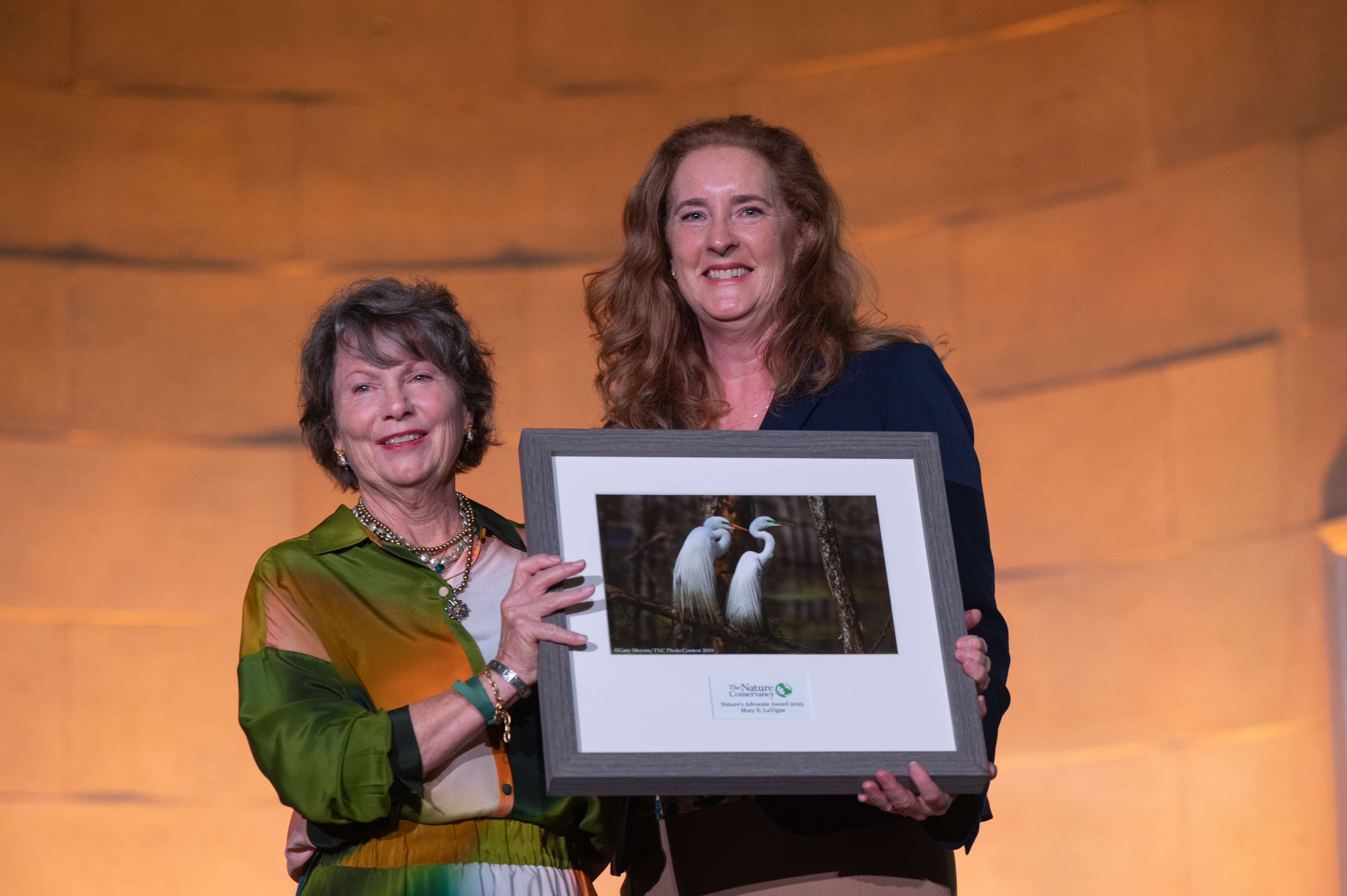
October 10, 2025
Louisiana Board Chair Mary LaVigne receives TNC's prestigious Nature’s Advocate Award.
Mary LaVigne, chair of the Louisiana Board of Trustees and a member of the North Carolina Board of Trustees, is this year’s recipient of The Nature Conservancy’s Nature’s Advocate Award, a prestigious honor that recognizes trustees who have gone above and beyond in their advocacy for nature and people.
For LaVigne, advocating for nature runs in the family. Her mother was a founding member of the Board of Trustees for TNC in Louisiana. LaVigne followed in her mother’s footsteps to become a trustee both in Louisiana and North Carolina.
LaVigne’s love for the natural world, and her concern about the threats facing it, have taken her from cypress swamps to the halls of Congress. She lobbied the North Carolina and Louisiana delegations at the 2023 Volunteer Leadership Summit and has joined four TNC fly-ins on Capitol Hill since.
At the most recent fly-in in June 2025, a TNC staff member hailed her “courageous” defense of international conservation funding to the Speaker of the House’s team. Mary’s unrelenting commitment to roll up her sleeves and engage enthusiastically in advocating for TNC's policy goals is exemplary and inspiring.
Along with lending her time to policy, LaVigne has generously supported TNC’s Meeting the Moment Campaign, which invests in, defends and secures policy wins. She also established a matching grant challenge to restore TNC’s North Carolina preserves in the wake of Hurricane Helene.
“Mary has been a very effective advocate for TNC’s 2030 Goals and state specific policies. Her perspectives on conservation policies are respected by congressional members, both for her deep knowledge of issues in both states and her energetic delivery while sharing that information,” says Karen Gautreaux, the state director for TNC in Louisiana. “We are very grateful to have Mary as our Chair, and she well deserves this distinctive award.”
LaVigne has passed her passion down to her daughters, Eugenia and Henley, who have accompanied their mother to TNC preserves and board meetings. When she is not advocating in the halls of government, LaVigne enjoys taking time to appreciate the beauty of the natural world — hiking, birdwatching and exploring on horseback.
“Mary would call herself an introvert, but no one should underestimate her resolve when it comes to advocacy and conservation. She has a backbone of steel,” says Katherine Skinner, the executive director of TNC in North Carolina. “Mary has spent countless hours in swamps and bogs, forests and coastal areas learning firsthand about the special places TNC is working to protect. Her knowledge of these efforts and her passion for protecting them are her secret weapons as she works tirelessly on behalf of TNC and our mission.”
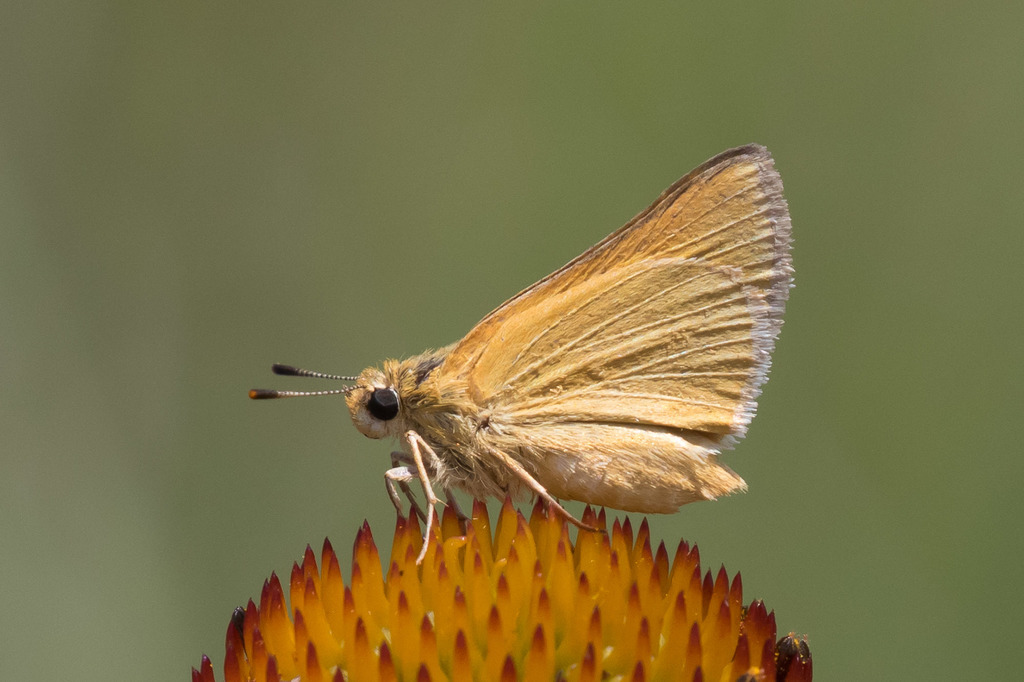
September 18, 2025
TNC’s St. Tammany Parish preserves assist in a butterfly study.
Two Louisiana butterfly and moth experts recently scouted The Nature Conservancy’s St. Tammany Parish preserves for Arogos skippers (Atrytone arogos) to assist a genetics research study examining the evolutionary relationship between two rare skipper butterflies.
Lepidopterists Dr. John Himes and Craig Marks, author of “Louisiana Butterflies,” a field guide published by LSU Press, were asked to collect at least three live male Arogos skippers from TNC’s Abita Creek Flatwoods, Talisheek and Lake Ramsey preserves to send to Dr. Jaret Daniels from the University of Florida, who is conducting the study, “Genetic Differentiation of Disjunct Populations of the Arogos Skipper (Atrytone arogos) across the Eastern U.S.” Marks has documented the butterflies at Abita Creek Flatwoods on previous trips.
Brownish yellow in coloration, the Arogos skipper is a small butterfly about the size of a dime. It lives across the United States, and includes a variant found along the Gulf Coast, Marks said. In the Gulf Coast, the Arogos lives in pineland and wet areas, including pitcher plant bogs, which are featured on TNC’s St. Tammany Parish preserves. The Arogos’ host plants include toothache grass, broomsedge grass, bluestem grass and lopsided Indian grass.
“The eastern beard grass skipper or Arogos skipper (Atrytone arogos arogos) is a critically imperiled butterfly found in dry prairie, pineland and sandhill and seepage slope habitats in the eastern U.S.,” Daniels said in an email about the study. “A separate imperiled subspecies, the Iowa skipper (Atrytone arogos iowa), occurs in predominately prairie habitats in the Great Plains and Midwest and has been in decline since at least the ’80s. It remains unknown how these two geographically separated subspecies differ genetically and whether various ecotypes warrant subspecies status.”
The Arogos skipper once had a range that stretched from southern New York, Pennsylvania and New Jersey to the Carolinas, Georgia and along areas of the Gulf Coast. But today it is not found in most of that range, Daniels said. “This subspecies is threatened by habitat fragmentation, inconsistent or lack of land management activities and catastrophic events,” he said. “Today, the range is extremely discontinuous, and uncertainty remains regarding the viability of extant metapopulations.”
The study’s objectives are to examine the genetic connectivity and structure of the populations across Florida and the rest of the Deep South and assess the evolutionary relationship between the two described subspecies, Daniels said. “The Louisiana samples are particularly important as they represent the nearest Gulf Coast location to the known population in the western Florida panhandle — and are somewhat in between true East Coast populations (Eastern Beard Grass Skipper) in the Florida peninsula and those farther west considered to be the Iowa skipper. In other words, they may provide us with some useful insight into how these populations differ from one another.”
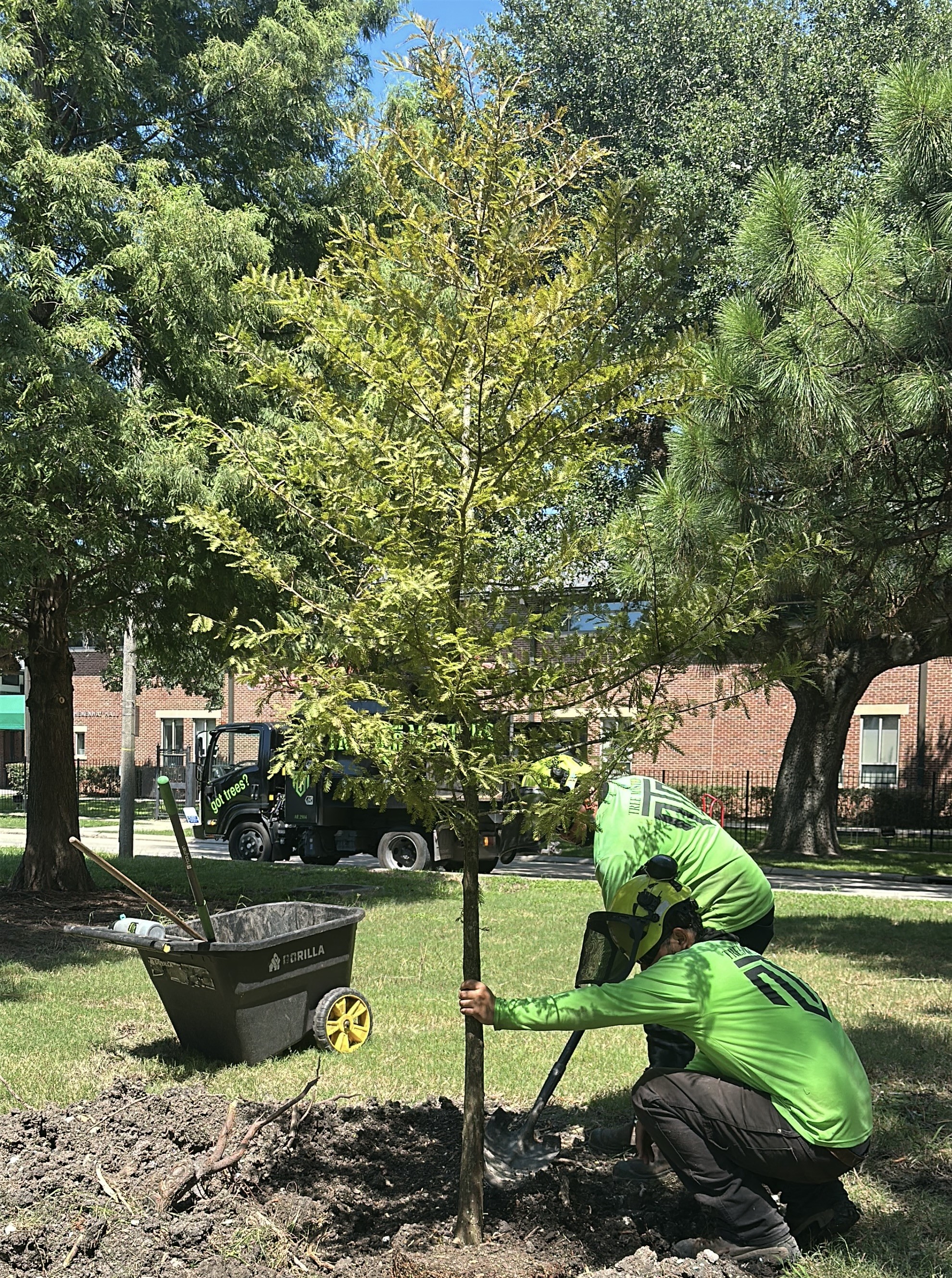
September 11, 2025
Louisiana Treesilience makes tree canopies more storm ready in a New Orleans neighborhood.
As we hit the peak of hurricane season, The Nature Conservancy’s Louisiana Treesilience program has been busy working to make urban tree canopies healthier and more storm resilient. In New Orleans’ Lakeview neighborhood, Louisiana Treesilience, working in partnership with the non-profit Friends of Lakeview, recently removed 11 dead or hazardous trees and conducted maintenance on mature trees along over a mile of Canal Boulevard. TNC then planted 22 live oaks and bald cypress trees and purchased 25 additional bald cypress and live oaks, which will be planted by Friends of Lakeview along Milne Boulevard.
During the last year, Louisiana Treesilience has planted more than 7,000 trees on public property and removed 53 dead or hazardous trees in six communities across south Louisiana.
Does your community need help restoring, maintaining or adding to its urban tree canopy? There is still time to submit an application for this round of Louisiana Treesilience funding. The program is a great way to bring trees to your community or create healthier urban canopy for storm season.
Find more information and the application at nature.org/louisianatreesilience. To discuss project options, reach out to TNC's Louisiana Treesilience Program Coordinator Amanda Takacs at Amanda.takacs@tnc.org or 330-421-0013.
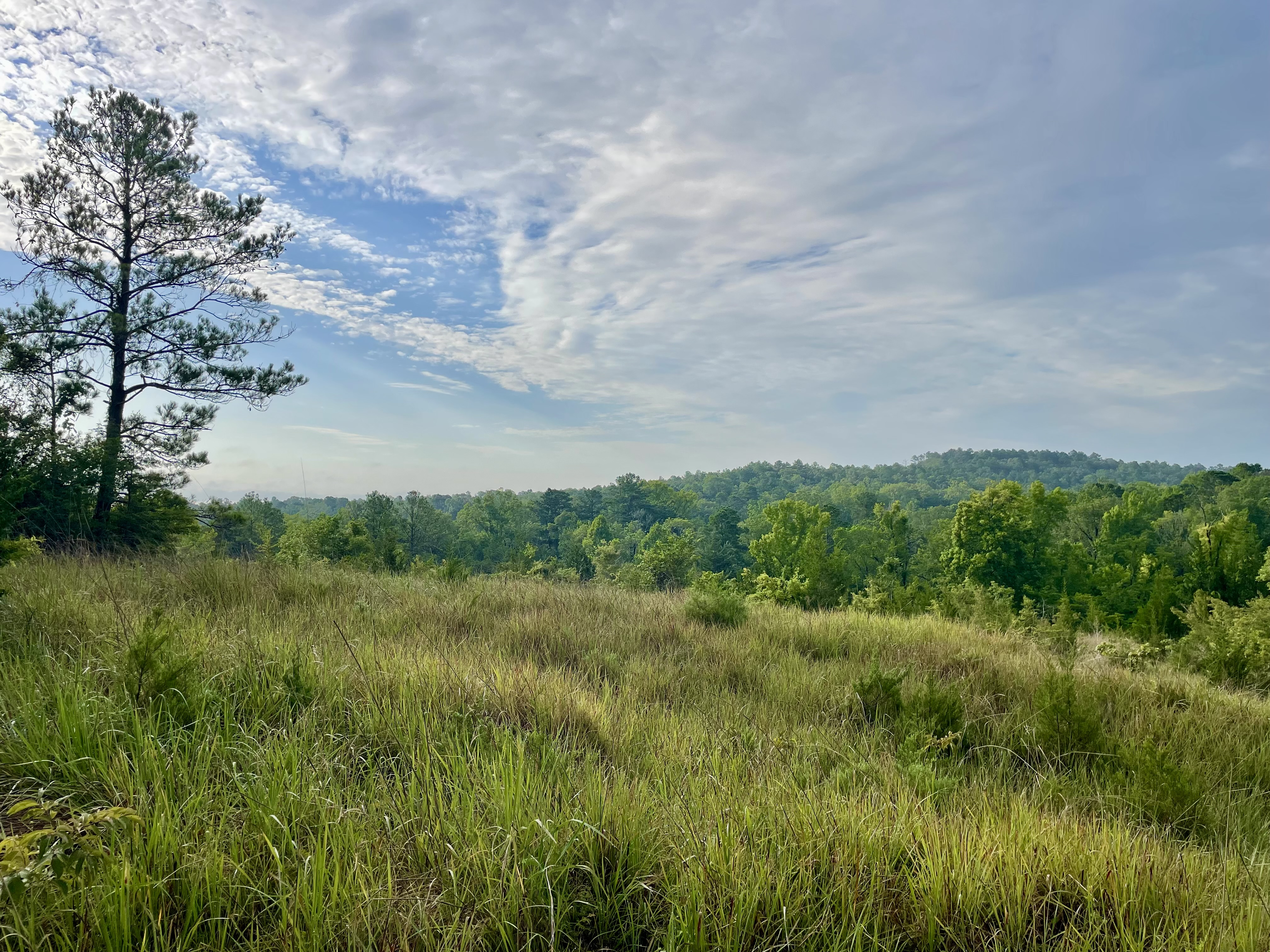
September 3, 2025
Geologic and photographic history inform a restoration project at TNC’s Copenhagen Hills Preserve.
The Nature Conservancy has 21 preserves in Louisiana. Many are open to the public, although some are not for a variety of reasons. In many cases, such preserves host very rare species or natural communities that are sensitive and susceptible to declines with even minor amounts of improper disturbance. Or, access may be difficult, with narrow roads or erosion-prone soils, hindering TNC’s ability to welcome visitors at all times without supervision.
TNC’s Copenhagen Hills Preserve is one of those places, considered one of the most significant botanical sites in the state. Much of that is due to a unique geologic formation originating from marine sediment deposited over millenia during the Eocene Epoch (~35-55 million years ago) when a shallow sea covered southern Louisiana and much of the rest of the Gulf and South Atlantic Coastal Plains. This formation, known as the Jackson Formation, has in certain places spawned calcium-rich, often alkaline soils that provide ideal substrate for unique plants known as calciphiles. At least 26 plant species found at Copenhagen Hills and the surrounding area are considered state or globally rare, 12 of which have been recorded nowhere else in the state.
Over the summer, TNC was out at Copenhagen Hills, scoping things out in advance of a restoration project in an area that harbors very rare, unique calcareous prairies. While remote, these “prairies on top of hills” are kept open in large part by the high pH and shrink-swell nature of the soils, which tends to help prevent invasion by woody plants. Along with the adjacent shortleaf pine woodlands, these prairies historically experienced routine fire, which helped to keep the prairies wide open. Without these fires, the prairies will slowly ‘fill in’ with shrubs and trees over many years
“All of our prairies at Copenhagen are overdue for burning, but before we do that, we want to remove some woody vegetation that has moved in,” says Will deGravelles, TNC’s Louisiana director of protection. “We also plan to restore prairies lost to woody encroachment so long ago that only historic imagery from the 1940s confirms they were prairie to begin with. The images also help us to understand their dimensions.”
In preparation for the work, TNC’s crew marked edges of prairies for woody shrub and tree removal and flagged other trees and shrubs to leave alone based on the imagery and knowledge about the ecosystem.
deGravelles adds, “Every time you’re out there you run in more cool flowering things. I look forward to seeing what appears after we do the restoration work, including some prescribed burning next year.”
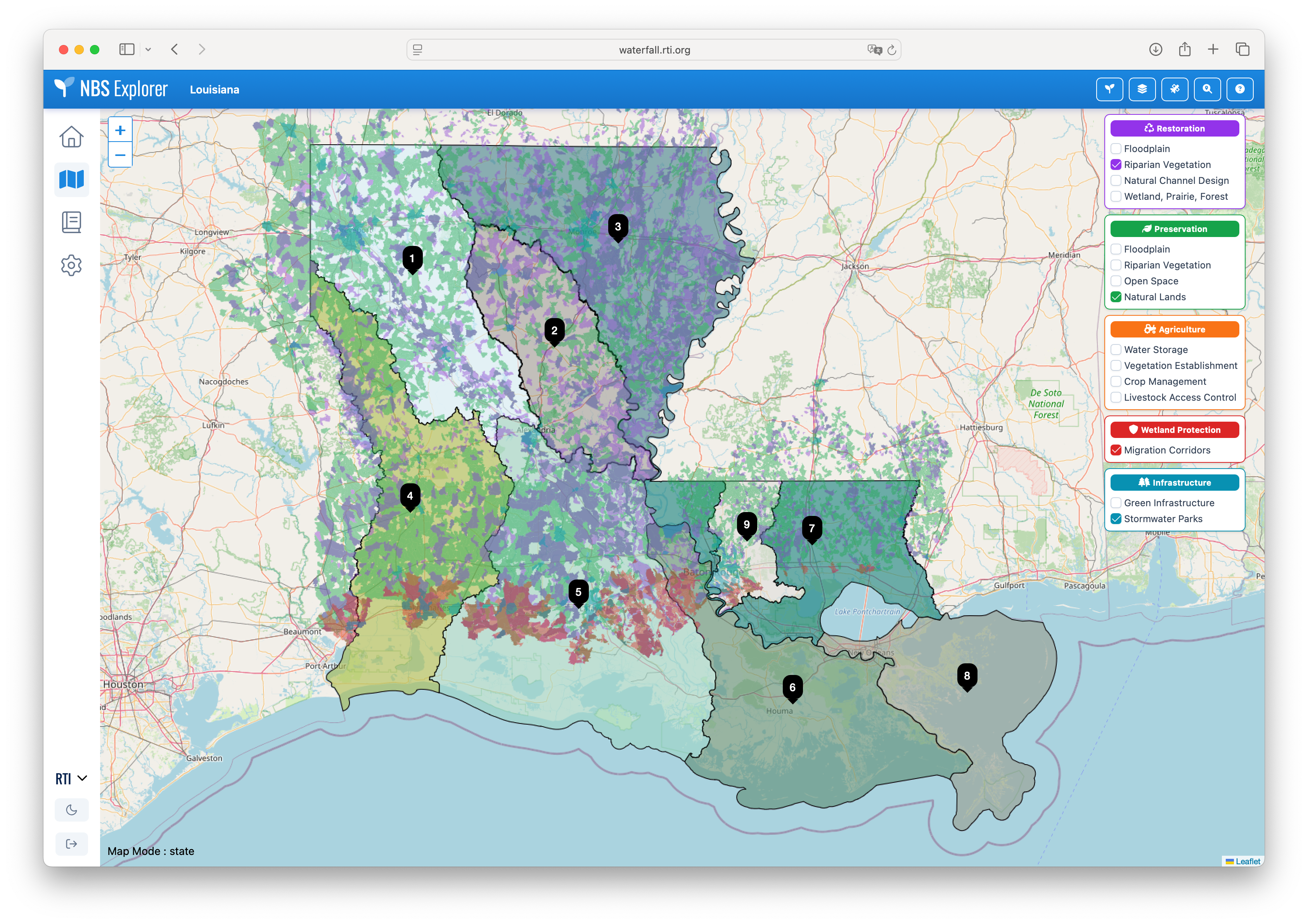
August 31, 2025
A new TNC tool helps communities explore nature-based solutions to flooding.
As sea levels rise and communities face more frequent and severe weather events each year, urban and rural areas alike are facing challenges in preventing flooding and mitigating disasters. Now, The Nature Conservancy is sharing an innovative online tool that could help communities here and around the world incorporate nature-based solutions as they tackle these issues.
During a recent online presentation at the prestigious World Water Week in Stockholm, Sweden, TNC’s Louisiana and Gulf Program staff shared the new Nature-based Solutions (NBS) Explorer, a science-based planning tool to help communities incorporate floodplain restoration, land protection, flood parks and other natural solutions into their planning for a more flood-resilient future. Leading the presentation were Dr. Bryan Piazza, TNC’s Louisiana director of science, and Dr. Christine Shepard, TNC’s Gulf Program director of science, who were joined by Dave Harlan, TNC GIS developer in Louisiana; and Karrie Arnold, TNC Gulf conservation information manager.
The NBS Explorer was built for the Louisiana Watershed Initiative, a state program to coordinate nine watershed regions by engaging local governments and communities in developing projects to reduce flood risk and improve floodplain management. The team designed the tool with NBS practitioners and community stakeholders, as they will directly use it to plan future projects. During the World Water Week presentation, the team showed a live demonstration of the NBS Explorer’s capabilities and provided an analysis of conservation projects and nature-based case studies.
The NBS Explorer is an interactive, on-demand modeling tool that quantifiably evaluates risks and opportunities for employing nature in building flood resilience. After years in development, TNC and RTI International are getting ready to launch the tool, which was built on RTI’s Watershed Flow and Allocation (WaterFALL) modeling platform. RTI staff also participated in the World Water Week presentation.
The event drew a big online crowd, with participants joining from as far away as Ecuador, Bangladesh, Denmark, Finland, Nigeria, Pakistan, Cambodia, South Africa, and Greece. In the United States, participants joined from Colorado, Indiana, Louisiana, North Carolina and many other states.
“Water availability (too much or too little) is one way climate change impacts human and ecological communities,” the presentation announcement said. “To enhance community resilience to climate-induced changes, solutions must facilitate the maintenance and restoration of natural environments that retain water and promote ecosystem services.”
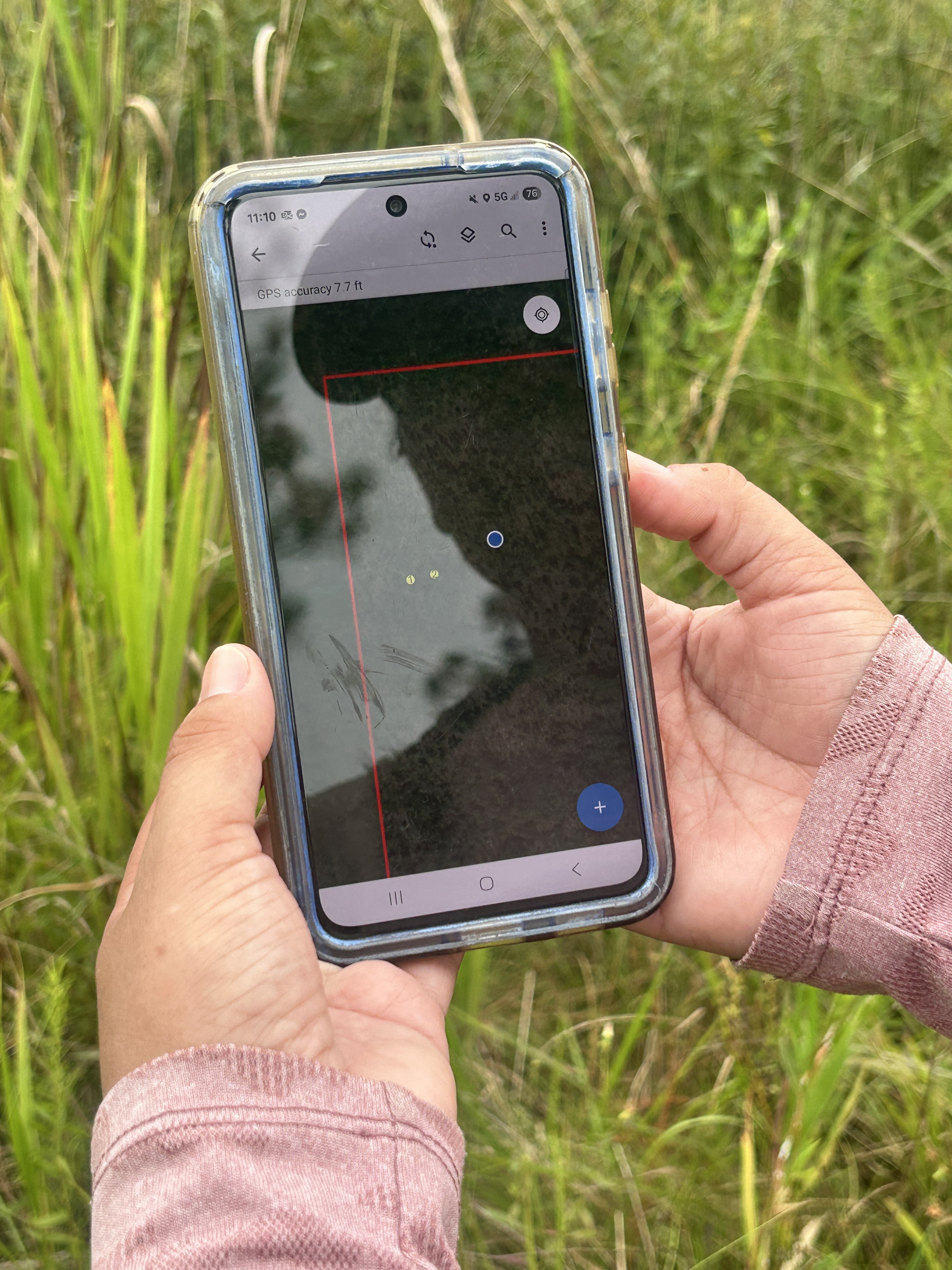
August 25, 2025
The devil’s in the details when it comes to conserving lands entrusted to The Nature Conservancy.
From coastal wetlands to longleaf pine forests, The Nature Conservancy monitors or manages almost 45,000 acres of critical habitat across Louisiana. At the heart of that work is a TNC promise: these lands will be protected to benefit nature and people now and long into the future.
When TNC acquires a piece of land, it becomes part of our portfolio. Adding land to our system of nature preserves happens in many ways including through direct purchase, donation, or as part of a conservation easement agreement where TNC and a landowner enter into an agreement that upholds the conservation values of a privately owned property in perpetuity.
After that, our conservation team takes an inventory of a property’s natural characteristics, identifying rare or sensitive species present (or absent) and noting environmental threats. Armed with that information, the team creates a science-based stewardship plan for restoring, protecting and monitoring the tract.
“Monitoring takes many forms, but at its foundation, it is our way of systematically keeping track of problems and progress,” says Will deGravelles, TNC’s Louisiana director of land protection. “The more we know in a timely fashion, the better we can be at restoring these properties to their ecologically appropriate condition and keeping them that way, while simultaneously encouraging human use and interaction with nature.”
TNC staffers are responsible for conducting annual monitoring. While the work is often completed with aerial maps, monitoring must be performed in person on each site at least once every five years to measure progress.
On a muggy afternoon, Tareesa Sevilla, Louisiana land steward, climbed aboard an all-terrain vehicle and drove into Persimmon Gully, a preserve in Calcasieu Parish. Home to a rare sodic (high sodium) longleaf pine flatwood savanna, an unusual variant of longleaf pine habitat that TNC is restoring and maintaining.
To monitor this special place, Sevilla dismounted from her ATV and headed out on foot through little bluestem (Schizachyrium scoparium) and Silveus’ dropseed (Sporobolus silveanus) grasses, looking closely for disturbances in the environment. Within minutes, she noticed a large circular area of churned up dirt. Pulling out her phone, she snapped photos and then uploaded the images and notes into an app that geo-tagged the location.
“When monitoring a preserve, I’m looking at the overall condition of the landscape according to that specific preserve’s management plan,” Sevilla says. For example, are target trees healthy? If seedlings are present, is anything hindering their growth? Is there evidence of erosion? Are there signs of unpermitted human activities, such as trash dumping, trespassing or the addition of infrastructure? Are there invasive species present and, if so, to what extent?
Invasive feral hogs likely were responsible for the disturbed soil Sevilla recorded at Persimmon Gully. According to the preserve’s management plan, the “most problematic invasive non-native species (at this site) include Chinese tallow tree, Chinese privet and feral pigs. Invasive plants can alter structure and composition, mainly by the act of physical displacement of native species.” Invasive animals, such as feral pigs, “can alter the structure and composition by consuming native plants (fruits and seedlings) and outcompeting native animals for food.”
Removing invasive species is a key part of stewardship, and the team works diligently to tackle the invaders through physical removal and other means. For example, TNC and its neighbors at Persimmon Gully have enrolled in a Natural Resources Conservation Service program in which biologists trap feral pigs for removal.
“On our preserves, we have set a high bar for ourselves to restore these properties to their historic ecological condition in a world with many unnatural threats and pressures,” deGravelles says, adding that it is work that demands resources in terms of money, time and manpower. “Sometimes achieving our goals takes longer than we’d like, but aside from the commitment we’ve made, the reward is so worth it.”
In Louisiana, the team responsible for monitoring TNC’s nature preserve and conservation easements includes deGravelles, Sevilla, Chris Rice, Dan Weber, Bill Rivers, Jean Landry and Joe Baustian. Jill Andrew, Cypress Island Preserve manager, also works with the team to track progress and provide interactive maps and imagery to aid them both in the field and in the office.
“When you experience — see, hear, touch, smell — an ecosystem that is functioning and healthy, it is literally life-affirming,” deGravelles adds. “When you walk into a longleaf pine savanna and two dozen species of forbs are blooming, frogs are calling after a rain, and brown-headed nuthatches and fox squirrels are scurrying along branches, those moments are why we get up in the morning and we want our preserves to be those places consistently.”
Monitoring and stewarding TNC’s properties are some of the organization’s most important work. Funding these efforts is vital to restoring, protecting and preserving Louisiana’s unique ecosystems
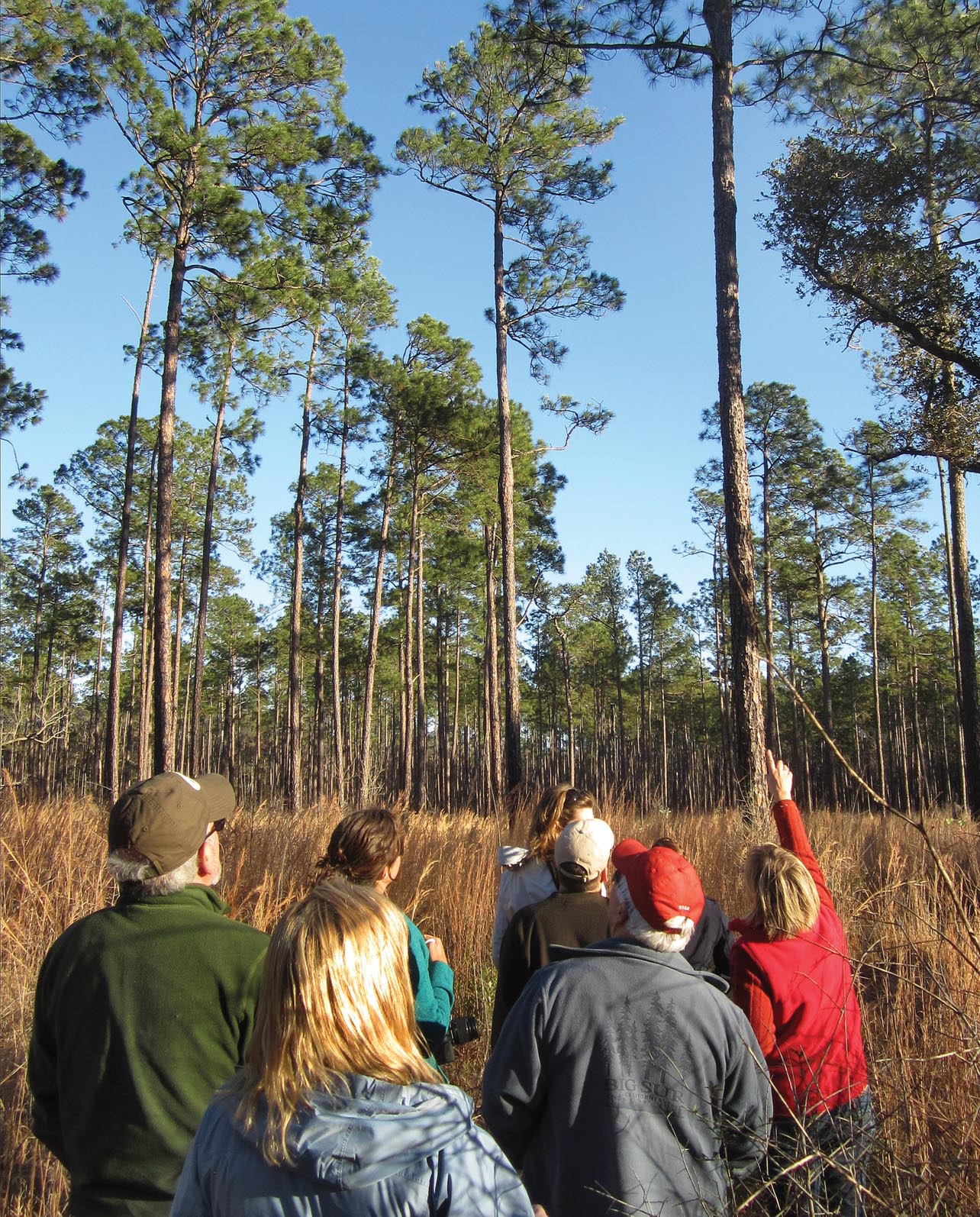
July 29, 2025
The Nature Conservancy's Legacy Club members discover a unique sense of place in Louisiana.
On a spring day, somewhere in Louisiana, a boat full of travelers rested on calm waters under the shade of a big cypress tree. Their attention focused on the sky above the boat, where a pair of osprey parents tag-teamed between foraging for food and tending to their nest. A graceful swallow-tailed kite soared above the lake, also hunting for a snack. Along the way, the group had already seen an alligator or two, a presence felt whether the reptiles are hiding in the background or basking in full view.
According to the group’s leader and The Nature Conservancy’s Director of Conservation in Louisiana, Seth Blitch, the scene included much of what makes Louisiana . . . Louisiana, adding, “When nature can speak for itself, it is best to be quiet."
The group that day was visiting as part of TNC's Legacy Club comprised of members who have named TNC in their estate plans. Each year, TNC invites these members on a handful of handful of journeys that go deep on innovative conservation work TNC is pursuing in some of the world’s most spectacular settings. In 2025, options included an itinerary set in the Pelican State.
This particular journey covered locations that would show connections among TNC’s work on lands, rivers, wetlands and coastal habitats throughout the state. After launching the trip with a night out in New Orleans, the first stop was to the Abita Creek Flatwoods Preserve to feature the before-and-after effects of prescribed burning on a landscape where TNC is working to restore fire dependent longleaf pine forest that once covered a significant portion of the southeastern U.S.
Next up was a visit to TNC’s Cypress Island Preserve, but only after a night of Cajun music and a traditional crawfish boil at the preserve’s Visitor Center near the town of Breaux Bridge.
“This is where our group enjoyed that one (of many) special moments in nature that reminds all of us why we travel to explore it and work to protect it,” adds Blitch.
The third and final leg of this journey included a visit to TNC’s Atchafalaya Conservation Center (ACC). Situated in the heart of the largest forested wetland in North America, this floating satellite office serves as a hub for research, restoration and community engagement for efforts taking place within the Atchafalaya River Basin.
"It is always a treat to host TNC's Legacy Club, a group of people who are always open to a new experience, ask thoughtful questions, and express curiosity and enthusiasm about TNC’s work,” says Blitch. “We hope that we left them inspired and more in tune with a sense of place. And we hope they’ll be back again soon.”
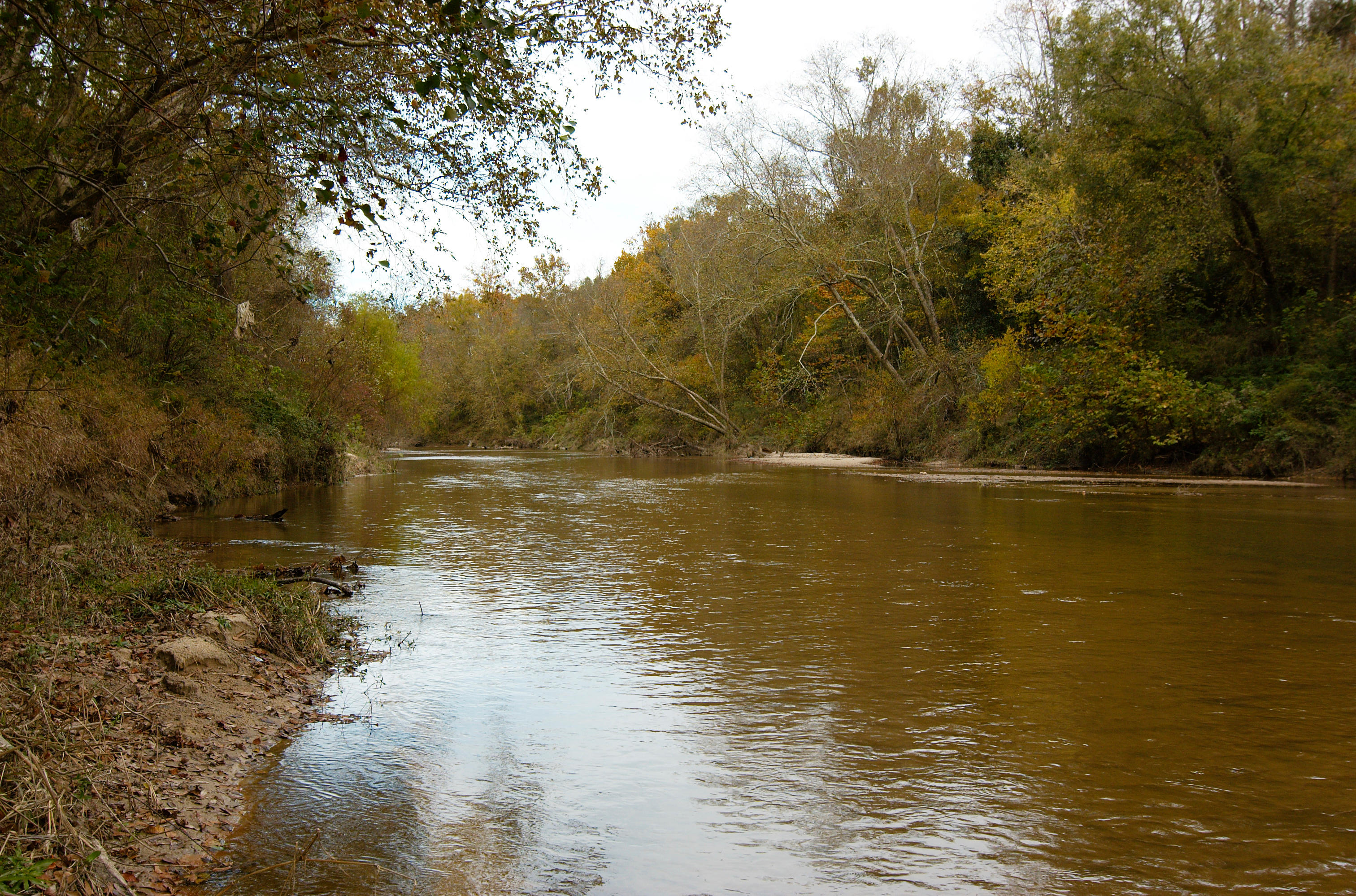
July 28, 2025
Conservation program receives $1 million in state funding.
Good news for conservation: The Louisiana Outdoors Forever Program received $1 million in funding in the state’s 2025-26 budget, which will help support conservation projects across the state.
The Louisiana Legislature’s funding for the program is a critical investment in conservation that will protect and preserve fish and wildlife habitats, water quality, working lands and recreational areas for future generations to enjoy, said Emily Vuxton, The Nature Conservancy's director of external affairs in Louisiana. The program also leverages state funds with other private and public money to maximize the benefits for residents and wildlife.
TNC supported the program’s funding during the recent Louisiana legislative session, which wrapped up in June.
Also during the legislative session, Vuxton testified before Senate committees about the importance of the Louisiana Department of Wildlife and Fisheries' Scenic Rivers Program. Legislation that would have removed or limited protections for the West Pearl River and the Comite River was defeated.
“Approximately 3,000 miles of rivers are designated scenic rivers in Louisiana,” Vuxton testified.
“The Scenic Rivers Program protects valuable fish, wildlife and habitats from degradation, provides flood protection and preserves the scenic beauty of these waterways for all Louisiana citizens. The Louisiana Department of Wildlife and Fisheries helps support and protect these scenic rivers and provides permits for actions that take place adjacent to scenic rivers. It also provides technical support and enforcement action for parishes which are seeking to manage problems taking place in or adjacent to these waterbodies. We oppose the removal or exemption of waterbodies from this program. Rivers are connected systems, and the removal of one section of a waterbody can have upstream and downstream impacts.”
Throughout the Louisiana legislative session, TNC defended and supported conservation priorities in the capitol. We look forward to working with our elected officials to ensure Louisiana’s lands and waters remain healthy and thriving places for all.
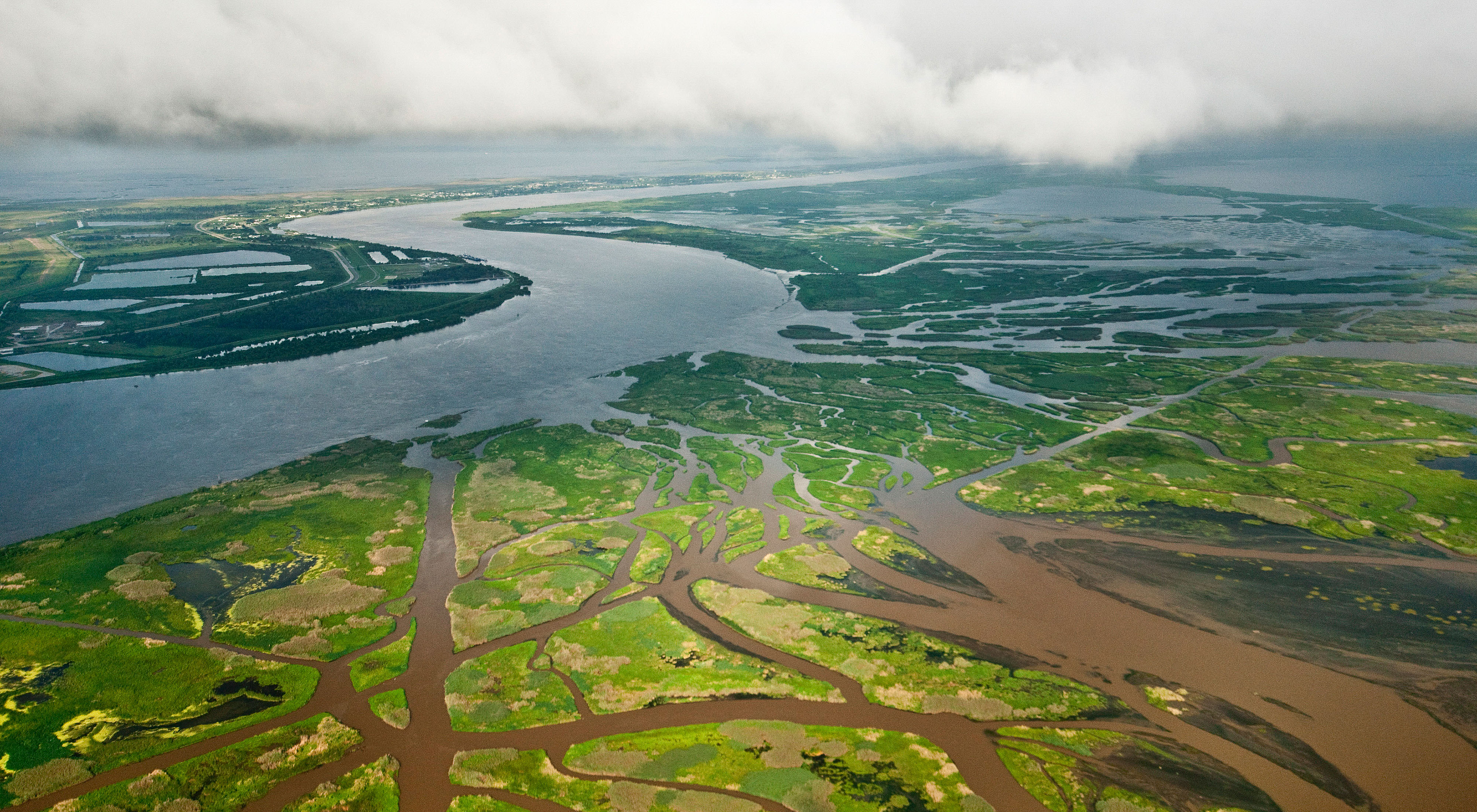
July 25, 2025
TNC shares findings on new water management tool on an international stage at World Water Week.
Dr. Bryan Piazza, TNC’s lead scientist in Louisiana and for the Mississippi River Basin Program, will once again have the honor of presenting the Nature-Based Solutions Explorer tool to international peers during World Water Week, the world’s largest meeting dedicated to water issues.
For the second year in a row, the event, based in Stockholm, Sweden, invited Piazza’s team to present findings from usage of the Explorer, an online decision-support tool TNC developed with RTI International. Anyone can tune into the free online presentation, held Sunday, Aug. 24 from 9 a.m. to 10 a.m.
The publicly available Explorer tool allows users to assess the capacity of various nature-based solutions to reduce flood risk, build resilience to changing weather and climate conditions, and secure freshwater for people and wildlife at local and watershed scales.
Years in the making, the tool is helping local communities, government agencies and industry leaders who seek a user-friendly, cross-border approach to equitably managing and protecting water resources and mitigating flood risk in Louisiana, with the potential to expand across the southeastern United States.
The team will present a live demonstration of the tool and highlight case studies conducted to plan for flood resilience in Louisiana communities and the agricultural landscape. The title of the presentation is “Nature-Based Solutions Evaluation Tools to Promote Climate Resilience.”
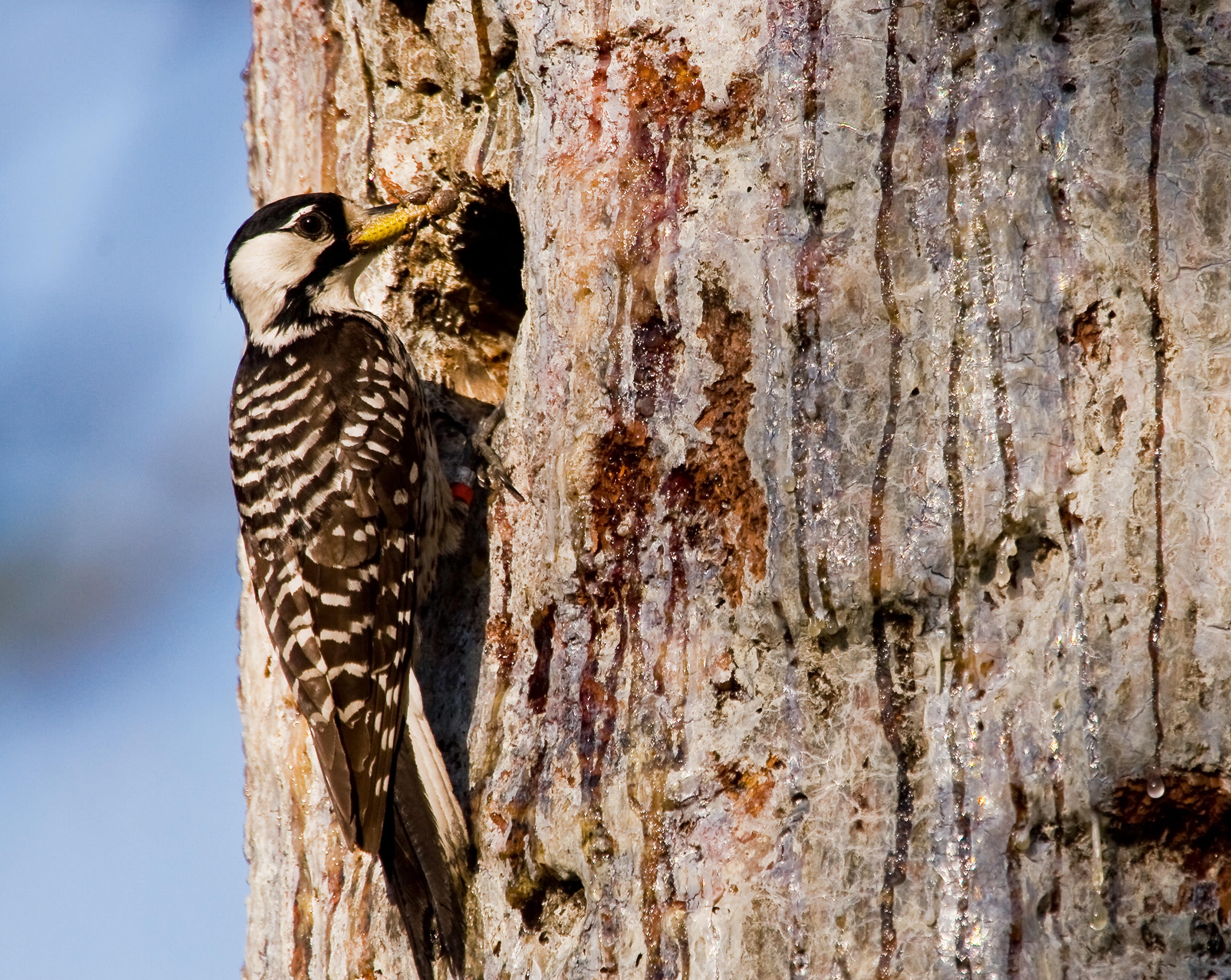
July 12, 2025
The Nature Conservancy provides a safe harbor for red-cockaded woodpeckers.
During hurricane season, even birds need to have plans for weathering a storm. Red-cockaded woodpeckers are listed threatened under the Endangered Species Act, and The Nature Conservancy is actively supporting habitat restoration for the birds across the South.
In Louisiana, TNC has installed nest boxes in the main trunks of longleaf pines for red-cockaded woodpeckers at its Abita Creek Flatwoods Preserve in coordination with Louisiana Department of Wildlife and Fisheries Safe Harbor program. While the birds are not currently present on the preserve, “hopefully, the nest boxes would act like an emergency weigh station of sorts for birds impacted by a theoretical storm,” says Will deGravelles, TNC’s Louisiana director of land protection and stewardship.
Big Branch Marsh National Wildlife Refuge in Lacombe, which is located near the preserve, hosts nests of red-cockaded woodpeckers. If a hurricane damaged the nesting habitat at the wildlife refuge, TNC’s nest boxes at Abita Creek could be “decent habitat as a short-term emergency place” for the birds, adds deGravelles. Although most of the preserve’s longleaf pines are too young and small at this stage to host red-cockaded woodpeckers (which require large tracts of mature pines in open canopies), the habitat would allow time for new artificial nest boxes to be re-installed at Big Branch or at other unimpacted locations such as DeSoto National Forest, Homochitto National Forest or Bogue Chitto National Wildlife Refuge.
Also, TNC’s Fort Polk Buffer Preserve was established in partnership with the U.S. Department of Defense specifically to protect land around the military base and Kisatchie National Forest, and to restore red-cockaded woodpecker habitat in the area.
These woodpeckers have “very narrow habitat requirements,” according to the LDWF Safe Harbor Program. “They are the only southeastern woodpecker to excavate their roost and nest cavities exclusively in live pine trees. They require pines at least 60 years old but prefer 80- to 100-year-old pines infected with red heart fungus. This species cannot persist in the long-term without suitable cavity trees and adequate foraging habitat.”
TNC is protecting and restoring longleaf pine habitat on its North Shore preserves, including Abita Creek Flatwoods, Talisheek and Lake Ramsey, with the hope that one day the woodpeckers may permanently nest there. “We have good habitat at Abita Creek in terms of savanna herbaceous ground cover and openness,” says deGravelles, but “in most places we don’t have enough old trees across enough acres to warrant a long-term, permanent cluster (of the birds) as of right now.”
TNC’s is also restoring CC Road Preserve in Allen Parish “with an eye towards recovering a fully functioning, biodiverse longleaf pine system that could support red-cockaded woodpeckers and other species found in this habitat,” says Seth Blitch, TNC’s director of conservation in Louisiana.
Longleaf pine habitats thrive with prescribed fire, so TNC periodically conducts controlled burns at these preserves. So far this year, TNC has burned 1,689 acres across Louisiana.
LDWF’s Safe Harbor Program encourages private landowners to manage their pine timberlands for the benefit of red-cockaded woodpeckers. “Through this program, private and other non-federal landowners enter into Safe Harbor Management Agreements with LDWF, committing to management activities to enhance, restore, or maintain habitat, contributing to the recovery of the red-cockaded woodpecker,” according to the program’s website. “The management activities associated with LDWF’s Red-Cockaded Woodpecker Safe Harbor Program benefit a host of other wildlife species that live in mature pine habitat, including bobwhite quail, eastern wild turkey, Louisiana pine snake, and gopher tortoise, just to name a few.”
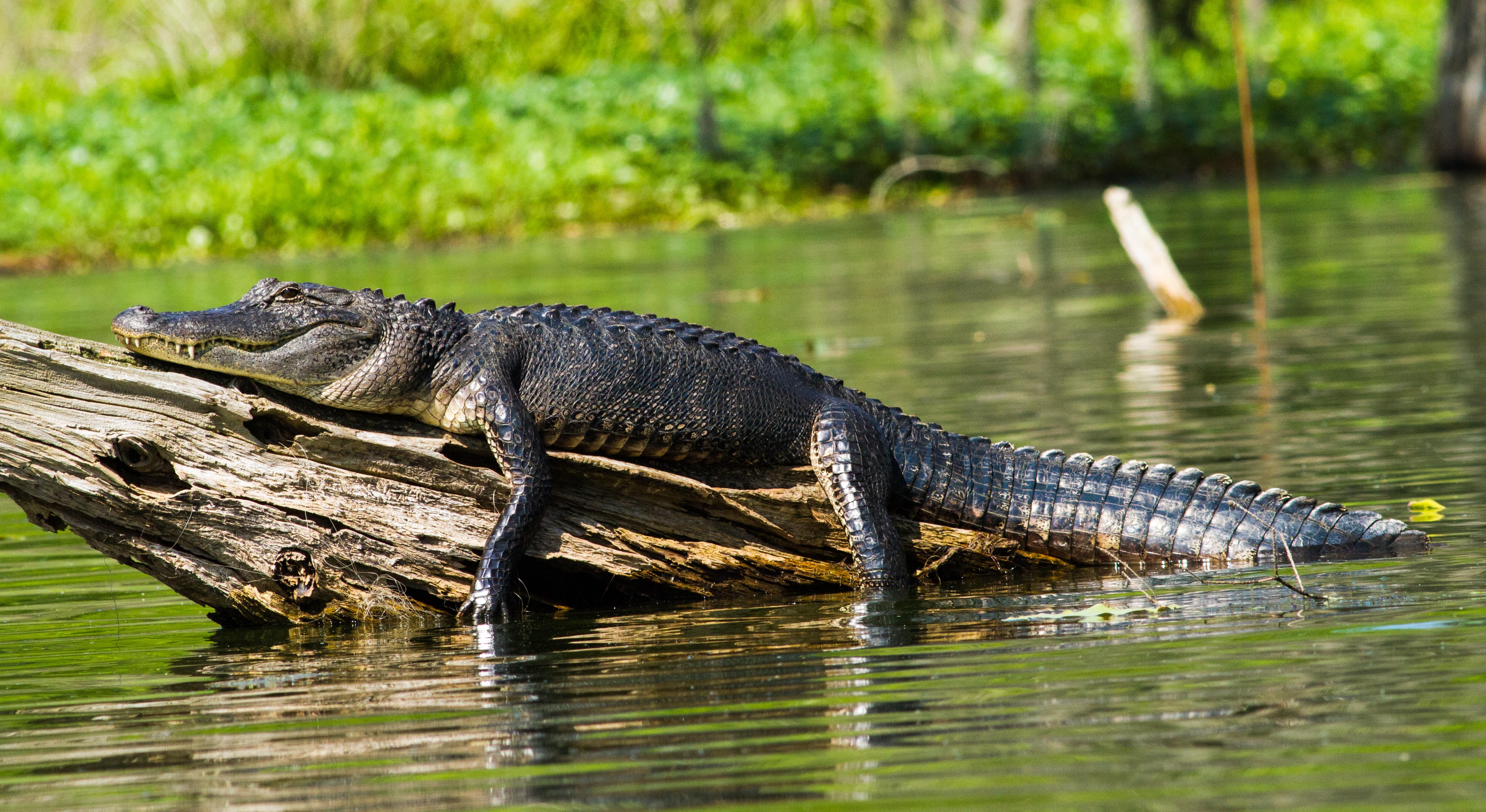
June 28, 2025
The Nature Conservancy closes a portion of its Cypress Island Preserve during nesting season.
While fatal alligator attacks remain rare in Louisiana, it’s never wise to test the patience of the state’s largest resident reptiles — especially when they’re nesting. Every summer, TNC’s Cypress Island Preserve takes the precautionary step of closing our 2.5-mile levee trail during nesting season for the American alligator (Alligator mississippiensis), which runs June 1 through early September.
Encountering a mama gator and her eggs is an experience neither gator nor human wants.
“Females stay within close proximity of their nests,” says Preserve Manager Jill Andrew. “If someone approaches, they can be aggressive.”
Mating season takes place in the spring, when males fight ferociously for the right to mate with a female. In June and July, after mating, females use vegetation and other found materials to construct nests that can measure as wide as 10 feet in diameter. Typically nests are built near “isolated ponds in interior marsh habitats,” according to the Louisiana Department of Wildlife and Fisheries (LDWF).
Once constructed, the alligator covers her nest with vegetation. “As the vegetation decays, it creates heat to incubate the eggs,” LDWF reports. “The temperature of the nest determines the sex of the hatchlings, with warmer temperatures favoring males. However, very high temperatures produce females; high incubation temperatures also lead to more mortality.”
Females are typically between 10 to 15 years old before they begin mating. They lay an average of 32 to 46 eggs, but many do not survive into adulthood. “Incubation requires approximately 63 to 68 days, and hatching occurs from mid-August through early September,” according to the Florida Fish and Wildlife Commission.
During this time, moms don’t stray far from their nests, and the young hatchlings remain under her care for about six months, on the lookout for threats. Many predators can swoop up a baby alligator, including birds such as egrets and herons, largemouth bass and even other alligators.
Over the past 50 years, Louisiana’s wild alligator population has increased from less than 100,000 to more than three million, according to LDWF. Since more than 80 percent of the coastal wetland habitat in Louisiana is privately owned, LDWF developed a controlled wild harvest program to provide an economic incentive for landowners to maintain or enhance important wetland habitat and protect alligators. In Louisiana, there are also nearly 1 million alligators on farms.
“LDWF’s alligator management program is recognized internationally as a wildlife conservation success story and a model for sustainable use,” LDWF reports.
LDWF also recently launched GatorWise, which provides information to help humans “educate, respect and coexist” with alligators. When walking near water bodies in Louisiana, always assume that gators are present. “Alligators are very good at hiding. They will see you before you see them,” GatorWise says. “There could be alligators in places you have never seen them before, especially after storms or floods.”
While TNC's Levee Trail is closed at the Cypress Island Preserve this summer, the Visitors Center remains open on Saturdays and Sundays from 10 a.m. to 4 p.m. The preserve picnic pavilion and boardwalk sections also are open daily during daylight hours. All other portions of Rookery Road should be traversed with caution. Want to learn more? Contact us at (337) 342-2475.
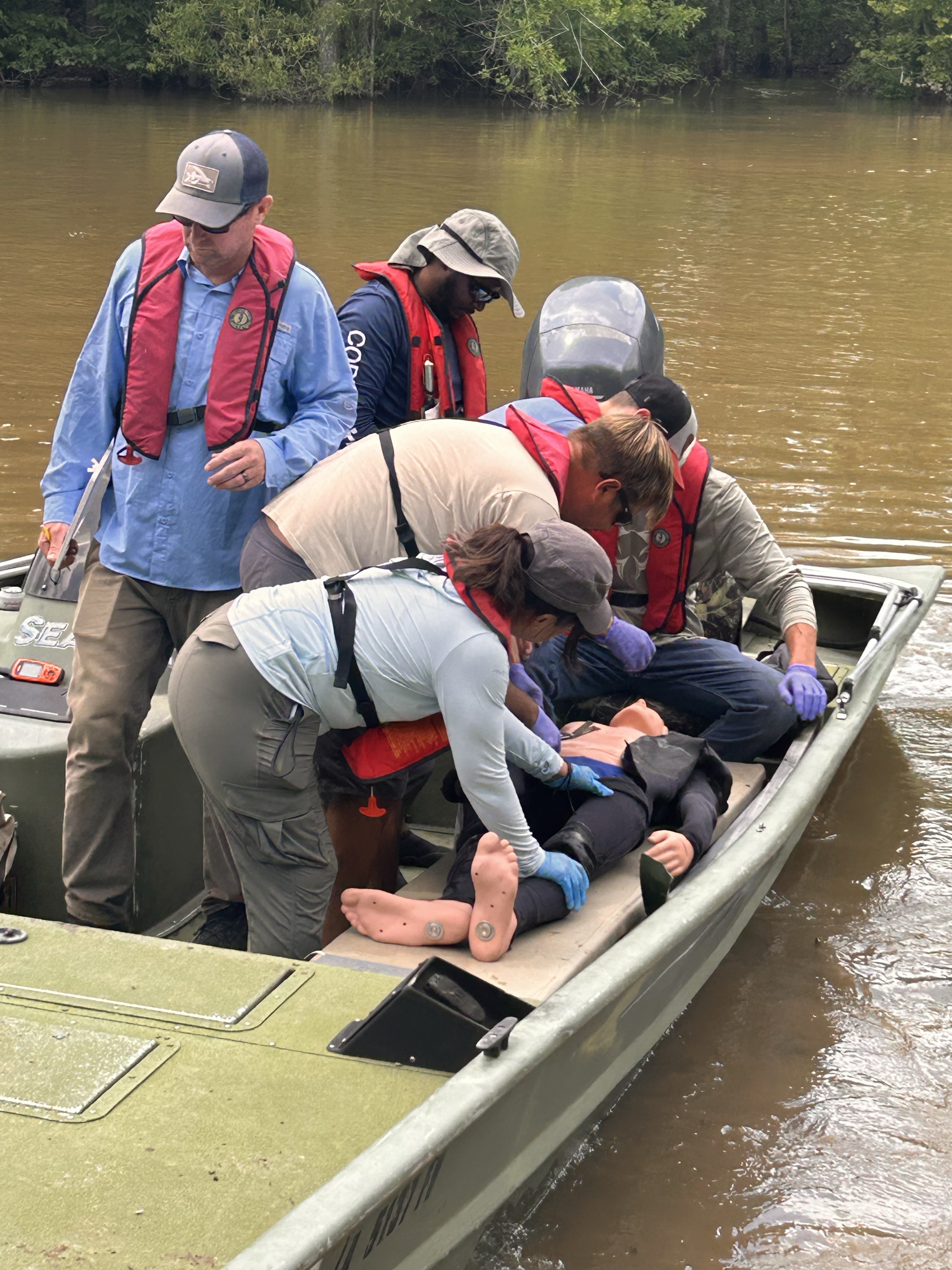
June 18, 2025
The Nature Conservancy hosts annual boating and diving safety meeting.
With more than half of the state comprised of water or wetlands, Louisiana served as a perfect location for hosting The Nature Conservancy's North America Boating and Diving Safety Control Board annual meeting. The Board is responsible for developing, updating and maintaining safety standards for TNC’s extensive boating and diving activities across the North America region, serving as a point of contact for boaters and divers across TNC divisions, onboarding and training boaters and divers, reviewing dive safety plans and assessing reported incidents.
TNC's Atchafalaya Conservation Center in Louisiana served as the perfect backdrop for this year's meeting, which included conservation, science, stewardship, legal and other staff from near and far. Bryan Piazza, TNC Louisiana’s director of science, is an original board member and continues to representTNC's southern US Division with regard to this work
"This year, members came from as far away as Hawaii, Indiana, Nevada and the Bahamas to learn about and tour the Atchafalaya River Basin and experience some of the unique types of boating we do here in our state," says Piazza. "They even participated in a Louisiana crawfish boil."
In addition to the business meeting, board members also held a specialty wilderness first responder and recovery training in the Atchafalaya swamp. This training taught participants how to find and care for an injured or sick person in a remote area for an extended period, including navigating to the injured person with satellite communications, stabilizing and caring for the patient, and moving patients out of the swamp to meet paramedics. The session even included a simulation where attendees had to extract a disabled boat with an injured person onboard.
Piazza adds, "This training was extremely valuable for our work here in Louisiana and other parts of the North America region, where people work in remote areas. It covered important topics, and really highlighted the size and remoteness of the Atchafalaya Basin and the unique boating that we do in Louisiana."
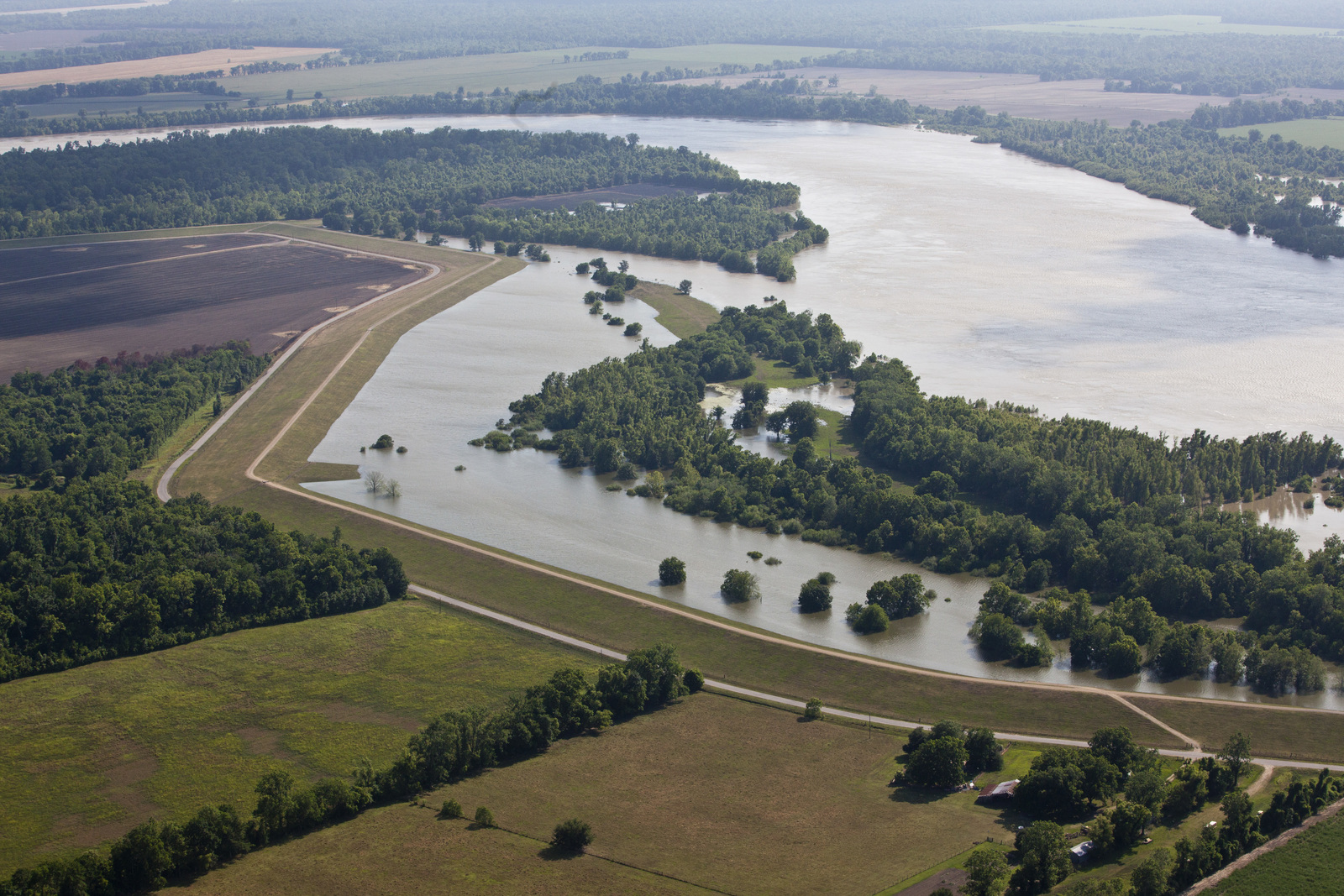
June 12, 2025
Experts convene around Mississippi and Atchafalaya river flows after a two-year pause.
The Nature Conservancy’s Sustainable Rivers Project (SRP) substantially advanced its goals when partners recently gathered to revive a project at the Old River Control Structure (ORCS) after a two-year pause. Managed by the U.S. Army Corps of Engineers, the ORCS is responsible for maintaining the water flowing down the Atchafalaya and Mississippi River basins.
In 2002, TNC and the Corps launched a collaborative effort to find more sustainable ways to manage river infrastructure to optimize benefits for people and nature. Now known as the Sustainable Rivers Project, this collaboration has grown from eight rivers in 2002 to 44 rivers in 2022, influencing 12,079 miles of U.S. waterways and including 90 associated reservoirs and dams.
The SRP focuses on determining flow requirements for rivers and then creating operating plans for dams that incorporate these flows. In April, TNC and the Corps held an SRP Flows Workshop, gathering representatives from federal and state agencies, universities, nonprofits and local communities from throughout the two river basins. The participants pooled their expertise around this infrastructure’s management plan, discussing what is and is not working with the distribution of water flowing between the Mississippi River and the Atchafalaya River.
“For decades, the ORCS has supported a 70/30 split, diverting 30 percent of the combined flow of the Mississippi and Red River flows into the Atchafalaya River Basin while allowing the remaining 70 percent to run its course down the Mississippi River,” says Bryan Piazza, TNC’s Louisiana director of science and facilitator of the SRP Flows Workshop. “Before revisiting whether the status quo remains ideal, we needed to bring as many experts together as possible to determine what is required throughout the year, and across years, to promote the ecological and economic health of these watersheds.”
In response to that need, the workshop participants spent two days digging into and using the latest science to develop hydrographs (graphic illustrations of annual flow patterns) that explore and compare alternatives against the current 70/30 flow split. Specifically, the scientists used software provided by the Corps to generate and compare hydrographs that would potentially alter current flows to provide optimum conditions for three specific targets:
- fish and crawfish production
- water quality across the swamp
- forest health
With the workshop complete and alternate hydrographs in hand, next steps include testing those hydrographs with a hydrodynamic computer model to assemble maps and a summary for the Corps that will outline how the alternate flow patterns affect the targets. Ideally, as these flow regimes are refined, they will be tested in real time and could lead to a shift in management of the ORCS to benefit people and nature.
“The ORCS flow regime was set up in 1963 based on what was happening at that time,” adds Piazza. “Since then, the water flow down the Mississippi River has changed, the coast has changed, and the climate has changed. These are reasons why we are grateful for this opportunity to explore these questions and revisit new approaches to the management of the ORCS that could support wildlife, flood protection and economic prosperity for communities who depend upon these rivers.”
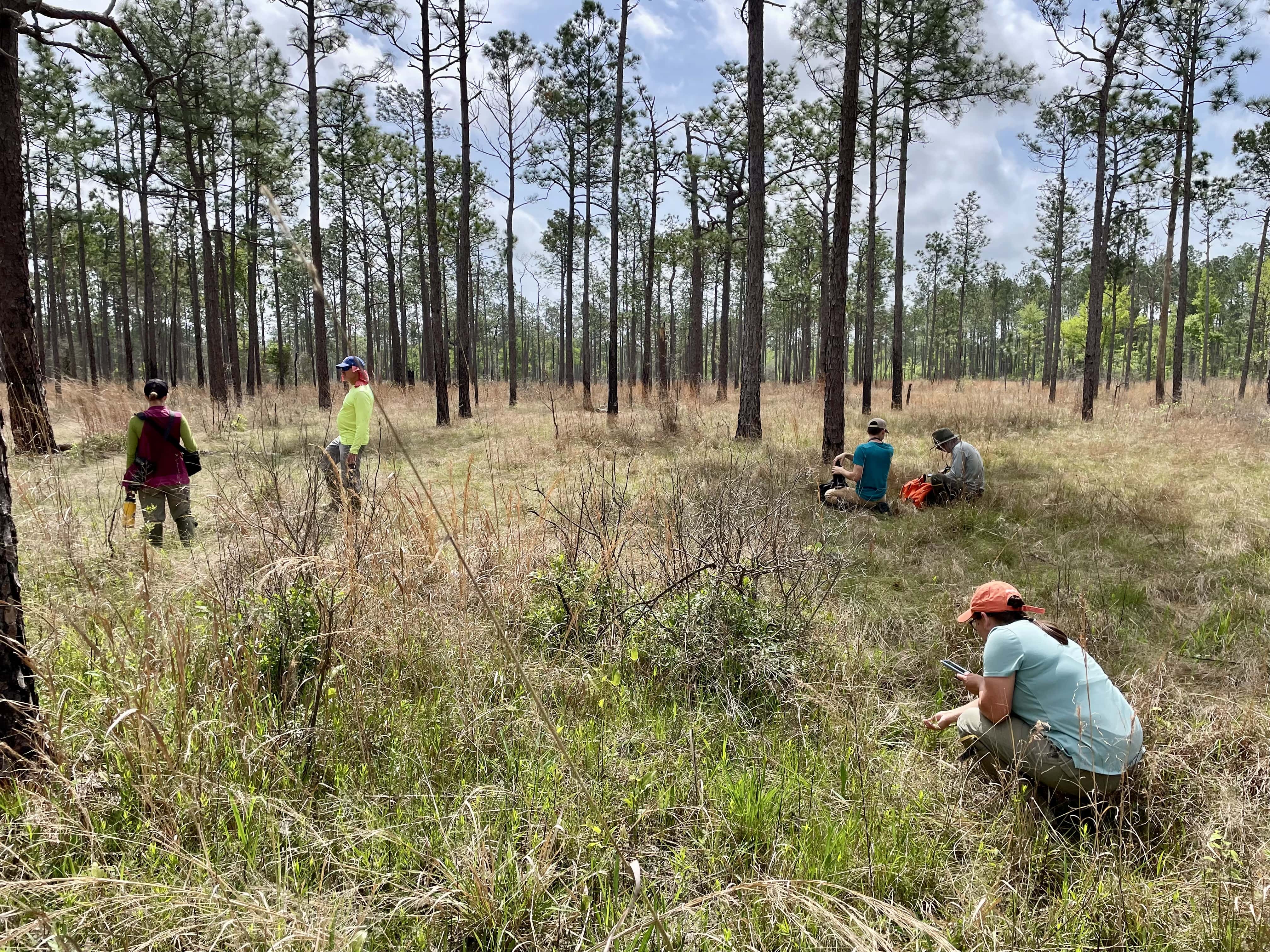
May 27, 2025
TNC’s Persimmon Gully Preserve serves as a living laboratory for National Park Service scientists.
This spring, National Park Service botanists and biologists from Big Thicket National Preserve in East Texas visited The Nature Conservancy’s Persimmon Gully Preserve in Calcasieu Parish. The aim of their visit was to gain a better understanding of the ecology, and past management, of longleaf pine flatwoods savanna growing in the type of rare, sodic (high in sodium) soils that underlie the bulk of the preserve, the same rare soil type that occurs in parts of Big Thicket, which occupies parts of seven Texas counties mostly following the Neches River.
The NPS scientists were trying to understand the dynamics of fire and other management tools on this soil type to inform their own management. One of the primary questions they brought to Louisiana was whether a rare grass known to be associated with these sodic soils — Silveus’ dropseed (Sporobolus silveanus) — was still present on TNC’s preserve based on few records known from many years ago. Due to TNC’s 20+ year history of routine prescribed burning at Persimmon Gully, the presence of this grass — and especially its proliferation — would serve as a strong indicator that the grass itself, as well as the surrounding ecosystem, are closely tied to fires as a disturbance and should be managed in this way over long periods of time.
As it turned out, the NPS biologists found Silveus’ dropseed within 100 feet of preserve’s entering the boundary and repeatedly found it in many other places throughout the property. This gives managers of Big Thicket more confidence in introducing fire to areas of sodic soils previously long-unburned on the National Preserve.
“Big Thicket is a special place, with more than 100,000 acres of a variety of ecosystems,” says Will deGravelles, TNC’s director of protection in Louisiana. “It was our pleasure to utilize one our TNC nature preserves to help them gauge and potentially alter their own management strategies. In the process, we also learned a lot from them, and intend to visit Big Thicket soon.”
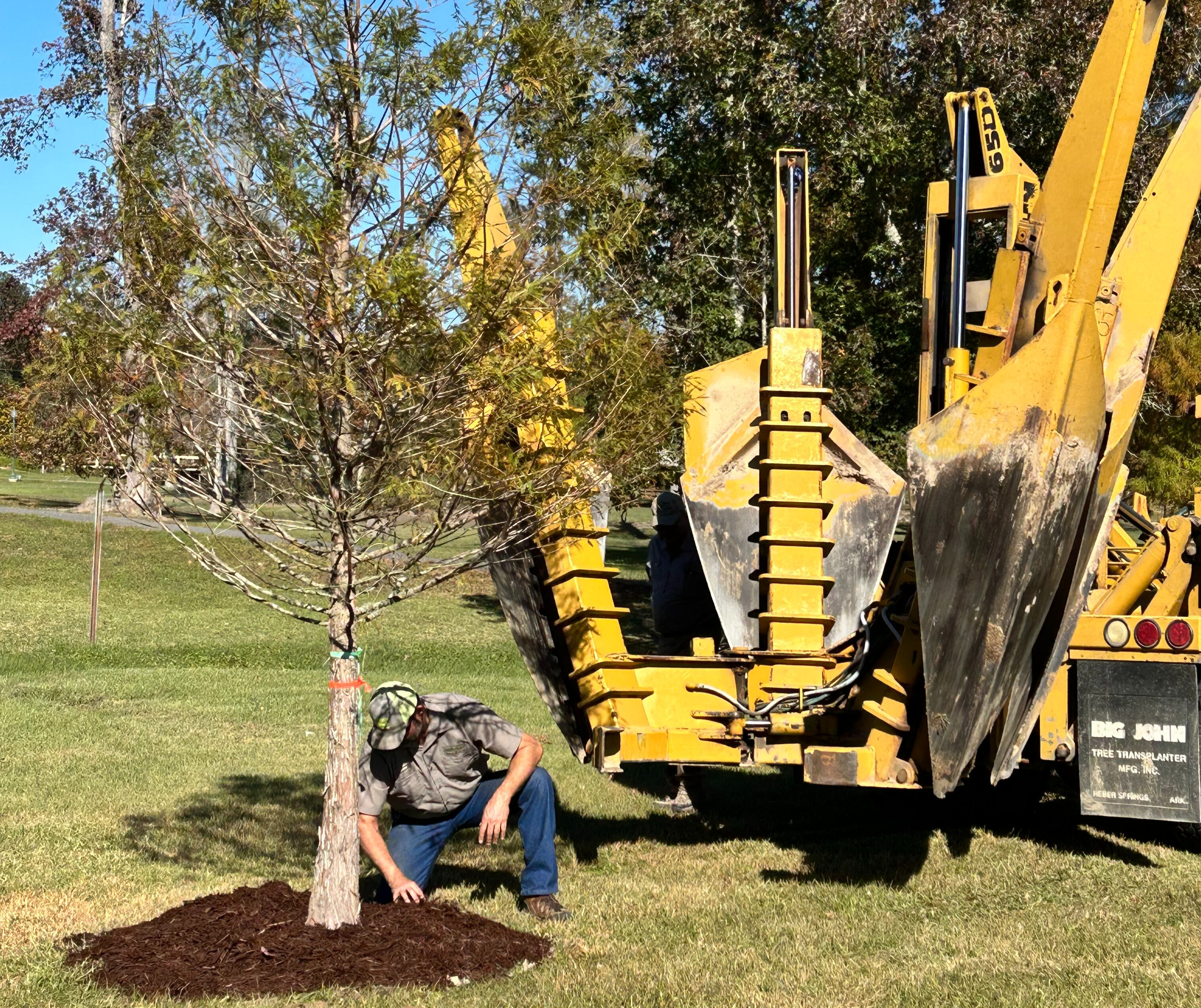
May 17, 2025
Louisiana Treesilience celebrates one year of building storm-ready communities.
This summer, new oak trees provide shade and improve air quality for residents using the walking trails and picnic areas in a popular DeRidder park. On a busy street in Alexandria, new magnolia trees brighten the landscape while reducing air temperatures in the city’s downtown. Thanks to The Nature Conservancy’s Louisiana Treesilience program, these trees and many others will help communities be more storm-ready at the beginning of hurricane season.
Over the past 12 months, Louisiana Treesilience completed four major projects, with five other active tree plantings in progress, in communities devastated by storms in 2020 and 2021. Funded by a three-year grant from the USDA Forest Service, the program has planted nearly 600 large trees and removed 19 dead or dying trees that were potentially hazardous.
These projects, which serve more than 60,000 Louisiana residents, mitigate the effects of recent hurricanes by both removing hazardous trees and strategically planting native species to Louisiana Treesilience Celebrating one year of building storm-ready communities, one tree at a time reduce urban temperatures. “The trees also provide a buffer from storms, manage flooding and improve quality of life,” says Amanda Takacs, TNC’s Louisiana community forest conservation coordinator.
“Treesilience allows us to employ conservation practices where people live, work and recreate,” says Seth Blitch, TNC’s Louisiana director of conservation. “Also, not everyone has the opportunity to spend the day in nature, so bringing it to municipal areas can strengthen a community’s bond with the natural world.”
In DeRidder, the city already is seeing the benefits. “The park is full of people every morning, with the walking trail and the pickleball court,” says Tommy Landry, DeRidder’s director of public works. “To bring children out to play, if there are no shade trees, they won’t stay long.”

April 8, 2025
Meet Cathy Schieffelin, TNC’s Newest Louisiana Trustee
For many, staying true to one’s interests and curiosity can lead them to exactly where they are meant to be. That rings true with Cathy Schieffelin, who has always allowed an adventurous spirit, love of travel and a passion for all living things to guide her around the world.
Originally from Lakewood, Ohio, Cathy graduated from Denison University and received a master’s degree from the Tulane University School of Public Health and Tropical Medicine. Along the way, she worked as a literacy tutor in Appalachia, handled communications for a health care organization in rural Kentucky and taught English at a bilingual girls’ school in Bogota, Colombia. Cathy also volunteered for the Peace Corps in Africa’s Comoros Islands where she met her husband, John. It was John’s parents who made her aware of The Nature Conservancy.
“As long-time members in California, they thought TNC’s mission was one that aligned with my own values,” Cathy said. “They weren’t wrong.”
Later, settled in Louisiana and raising a family, Cathy became acquainted with TNC as the owner of a small business that brought wildlife education into schools and community centers. She says, “I sought expertise from TNC in response to a request by clients to feature local wildlife in my presentations. It led to an ongoing working relationship and an opportunity to visit TNC’s nature preserves, meet their staff and see first-hand how the organization works on-the-ground in pursuit of its mission in Louisiana.”
This enduring relationship made Cathy a logical candidate for serving on TNC’s Louisiana Board of Trustees.
“At TNC, trustees have an opportunity to participate in everything — from attending a meeting focused on restoring nature in key parts of the Mississippi River Basin, to getting my hands dirty at a tree planting event,” Cathy adds. “TNC’s work isn’t just done, it’s negotiated by an incredibly knowledgeable and dedicated staff. I am excited to be a part of it.”
In addition to her role as a TNC trustee, Cathy Schieffelin is a Master Naturalist who loves exploring natural parks and preserves in Louisiana and beyond, and author of fiction whose writing is featured at Wildflowerspress.com.
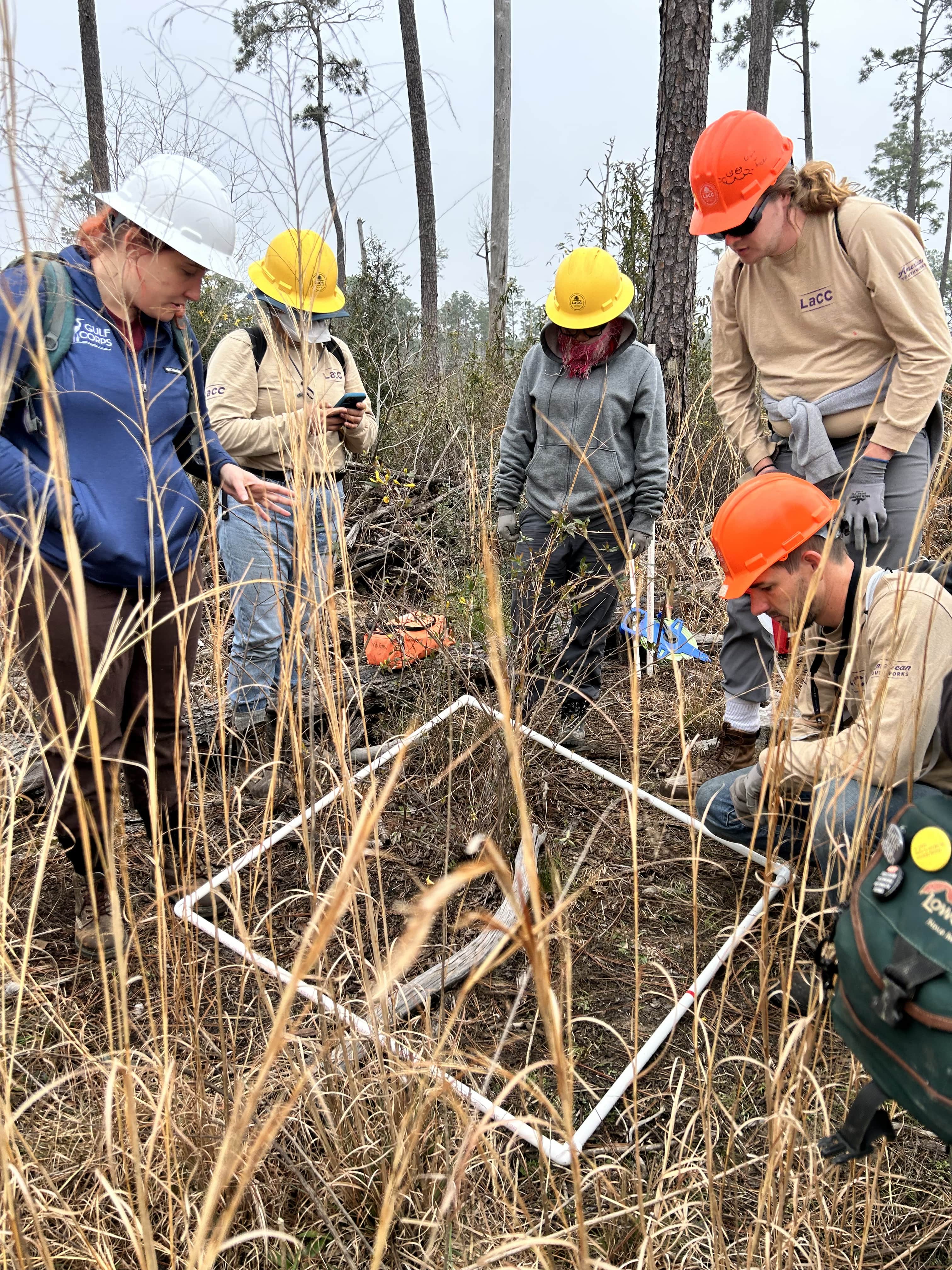
March 26, 2025
GulfCorps performs sentinel monitoring in Sam Houston Jones State Park.
On a chilly late February morning, GulfCorps members laced up their boots, applied bug spray and headed down muddy trails shrouded in fog at Sam Houston Jones State Park in Lake Charles. The group was on the hunt for longleaf pine saplings growing among the shoulder-high Bluestem native grasses that have come up at the park.
The Nature Conservancy’s Gulf Conservation Manager, Karrie Arnold, and TNC GulfCorps Operations Coordinator Bird Davidson, drove in from Alabama and Florida to lead the group in a sentinel monitoring project at the Louisiana state park. TNC has been helping to replant and restore the park after it suffered severe damage in Hurricanes Laura and Delta in 2020.
Encompassing 1,087 acres of mixed pine and hardwood forests, lakes and rivers, Sam Houston Jones State Park experienced a massive loss of established longleaf pine trees (Pinus palustris) during the hurricanes. After the storms, the park started removing the debris. In 2021, GulfCorps began partnering with TNC and Louisiana State Parks to restore Sam Houston Jones’ ecosystem by planting longleaf pine trees.
GulfCorps, a project of TNC and the National Oceanic and Atmospheric Administration (NOAA), creates jobs for young adults in Alabama, Florida, Mississippi, Louisiana and Texas. The teams provide extra muscle and energy for tasks that restore natural habitats on critical conservation lands across the Gulf Coast. Launched in 2017 thanks to a $7 million grant to TNC from the RESTORE Council, and administered by NOAA, GulfCorps represents a collaboration among TNC, the Student Conservation Association, The Corps Network, the Ember Alliance and three other conservation corps working on the ground in the region.
On this windless February day, the team’s job was to document the newly planted longleaf pines’ growth as part of the larger conservation efforts at the park. “We come back annually to sentinel spots, designated points, to see the difference,” Arnold said.
Since the devastating hurricanes, TNC’s Louisiana Treesilience and other TNC programs funded the planting of about 11,745 seedlings at Sam Houston Jones State Park.
The GulfCorps sentinel monitoring project tracks the growth and survival of the trees, Arnold explained as she demonstrated how to locate specific monitoring plots. These teams also document other vegetation growing around the trees and compare the data to information collected during previous monitoring sessions. Like a conservation Easter egg hunt, they spread out at one spot, hunting for saplings among the tall grass.
“We found 13,” called out a team member as the group gathered and began documenting the vegetation.
Longleaf pine saplings start out in a grass stage, where they look less like a tree and more like a bush. During this stage, the plants focus on building a strong root system before transitioning into a period of rapid growth called the “bottlebrush” stage. According to the Longleaf Alliance, once a longleaf bottlebrush reaches about 6 to 10 feet in height, lateral branches begin to emerge. The trees then spend their energy growing tall. Mature longleaf pine trees can reach more than 120 feet.
TNC is working to restore this important species across the Southeastern United States. “Longleaf pines once dominated the coastal plain, blanketing more than 90 million acres,” according to nature.org. “Today there are just 5.2 million acres, up from a historical low of 3.2 million acres two decades ago.”
Reforesting Sam Houston Jones State Park’s longleaf pines should make the park more resilient to future storms. Longleaf pines have a deep root system that makes the plants more tolerant to drought and helps them to survive high winds better than other trees. Longleaf pines also are adapted to fire, which could help the forest survive wildfires expected during periods of drought.
As the team scouted the park, finding the trees, excitement grew in the GulfCorps members. “This is an awesome success story,” Arnold said. “The pine trees last year were all in the grassy stage and the native (Bluestem) grasses were all about waist high. Now those grasses are shoulder high.”

March 18, 2025
A new land steward will manage The Nature Conservancy’s Louisiana preserves.
From a young age growing up on 21 acres in western Louisiana, Tareesa Sevilla was drawn to the outdoors. In adulthood, it took some time to determine how that passion might translate into a career. After some fits and starts, including time spent on a pre-veterinarian track, she took a break to re-think her professional path.
“Upon returning to college, a career counselor brought the conservation field to my attention,” Tareesa says. “After some research, I said to myself, ‘This is it.’”
With a natural resource conservation management degree under her belt, Tareesa worked in seasonal technician jobs before recently accepting a position as a land steward with The Nature Conservancy. In this role, she is charged with monitoring several of TNC’s nature preserves in Louisiana and implementing management strategies that include prescribed burning, invasive vegetation removal, tree planting, trail maintenance and other duties.
When she isn’t working, Tareesa enjoys getting her nature fix at Sam Houston Jones State Park, located near her home in Lake Charles. She will work out of a home office as the only TNC staff member located in this part of the state.
“While new on the job and to TNC, I am taking time to learn about each preserve and their individual needs,” she adds. “Depending on the season, I expect to be out and about quite a bit. Stewarding what we have here in Louisiana is a great responsibility and a role that I am honored to assume.”

March 6, 2025
The future of the dusky gopher frog hinges on regaining lost habitat.
Staff from The Nature Conservancy recently convened with peers from the U.S. Fish and Wildlife Service, the Louisiana Department of Wildlife and Fisheries, and the U.S. Forest Service to learn about how to prepare a site to support the federally endangered and globally imperiled dusky gopher frog (Lithobates sevosus). The meeting took place at the De Soto National Forest in Mississippi, near a site where remaining populations of the frog survive.
TNC is exploring the prospect of preparing a portion of its Talisheek Pine Wetlands Preserve in St. Tammany Parish to potentially welcoming these fragile amphibians back to Louisiana.
“We are involved because TNC is one of the only private landowners in the state who manage property harboring potentially ideal habitat—longleaf pine woodlands interspersed with seasonal wetlands—for this species,” says Seth Blitch, TNC’s director of conservation in Louisiana.
Native to parts of Louisiana, Mississippi and Alabama, the dusky gopher frog now only survives at a handful of locations in south Mississippi. This decline is primarily due to the loss of longleaf pine habitat, a fire-dependent ecosystem that has gradually disappeared throughout the southeastern United States. According to Blitch, TNC delivers periodic controlled burning to mimic this historic natural disturbance to improve the health and resilience of longleaf pine woodlands at its preserves. The frog also needs shallow, seasonally flooded depression ponds embedded within these woodlands in order to breed.
While formal arrangements for bringing the frogs back to Louisiana are not yet secured, TNC plans to restore a portion of the Talisheek Preserve identified as having conditions key to supporting dusky gopher frogs.
“It’s an involved process, from using Light Detection and Ranging (LiDAR) remote sensing technology for siting ponds to studying the area’s hydrology and soils,” explains Blitch. “It’s exciting to be involved with recovering an endangered species. This would be our first time reintroducing a vertebrate on a TNC property in Louisiana. We look forward to reporting back as the project unfolds.”
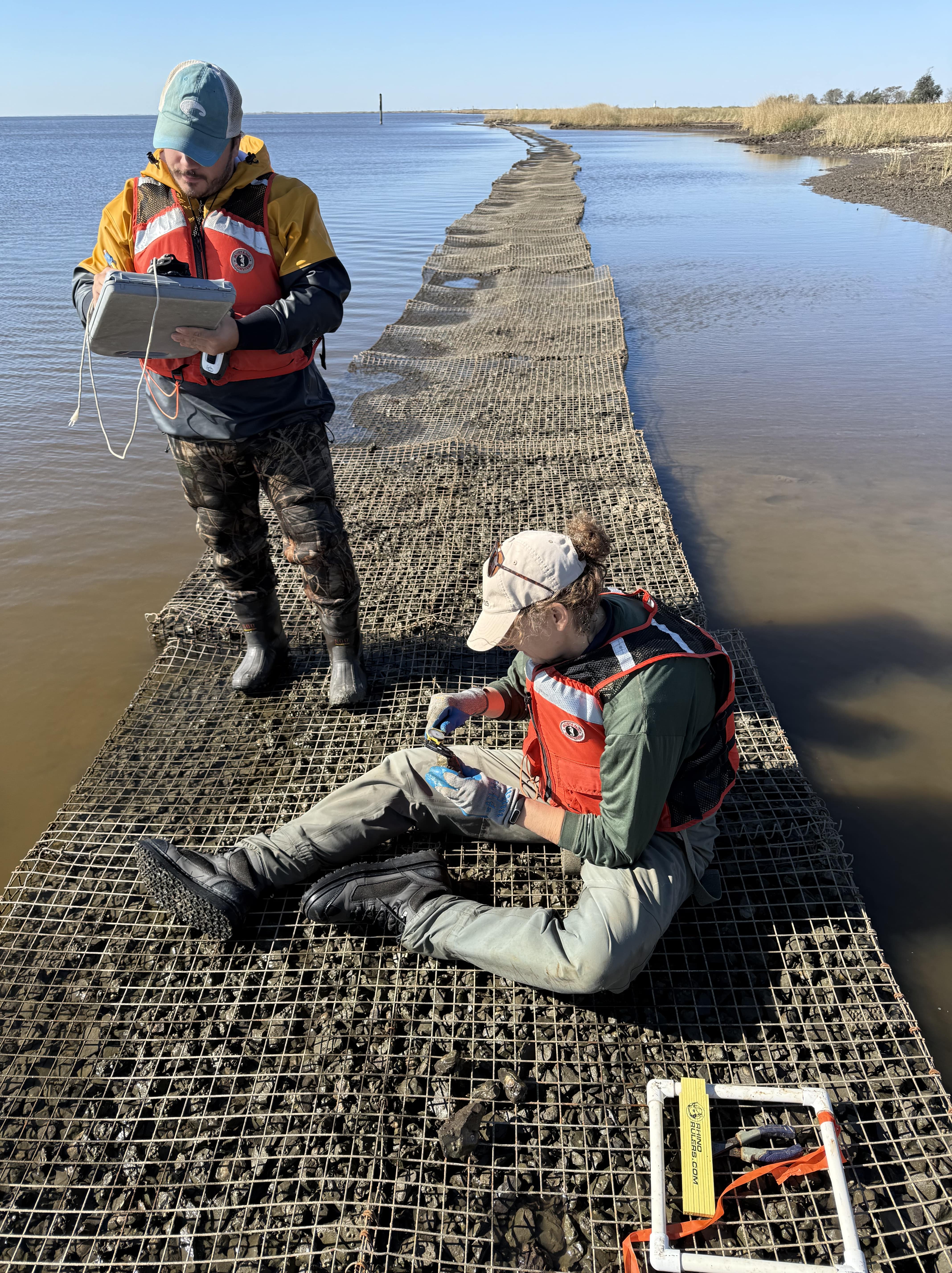
February 5, 2025
TNC oyster reefs show active growth, shoreline protection.
The humble oyster serves a vital purpose in coastal Louisiana—far beyond its starring role on po-boys and at raw bars. Oyster reefs buffer and stabilize shorelines to prevent erosion, slow wave energy and protect billions of dollars in infrastructure.
Reefs built by The Nature Conservancy in Calcasieu Lake are working to do just that. TNC’s Oyster Reef Restoration and Shoreline Protection project in West Cove of Calcasieu Lake recently got good news from its monitoring. The reef is protecting more than four miles of shoreline along Sabine National Wildlife Refuge. The Louisiana State University (LSU) AgCenter monitors TNC’s oyster projects and found strong oyster recruitment at all four project phases and survival and growth at the older reefs.
The first phase at Calcasieu Lake, which was completed in 2017, has created a well-established oyster reef containing diverse multi-age oyster populations. The reef is not only slowing shoreline erosion, but the shoreline is also showing accretion.The reef was originally built of galvanized steel gabion units, but those units over time have disappeared as planned, and a solid, 3-foot to 4-foot-wide natural oyster reef has formed.
Since 2009, TNC has collaborated with many partners to construct oyster reefs along 10 miles of vulnerable coastal marshes in southeast and southwest Louisiana. Many of the created reefs have had a positive effect on slowing shoreline retreat, with an average 50 percent reduction in erosion at some reef sites versus the reference sites without reefs.
The partners involved with the Calcasieu Lake project include the State of Louisiana Coastal Protection and Restoration Authority, National Oceanic and Atmospheric Administration, Environmental Protection Agency, Cummins Foundation, Coypu Foundation, CITGO, Chevron, US Fish & Wildlife Service, Louisiana Department of Wildlife and Fisheries, and the LSU AgCenter.
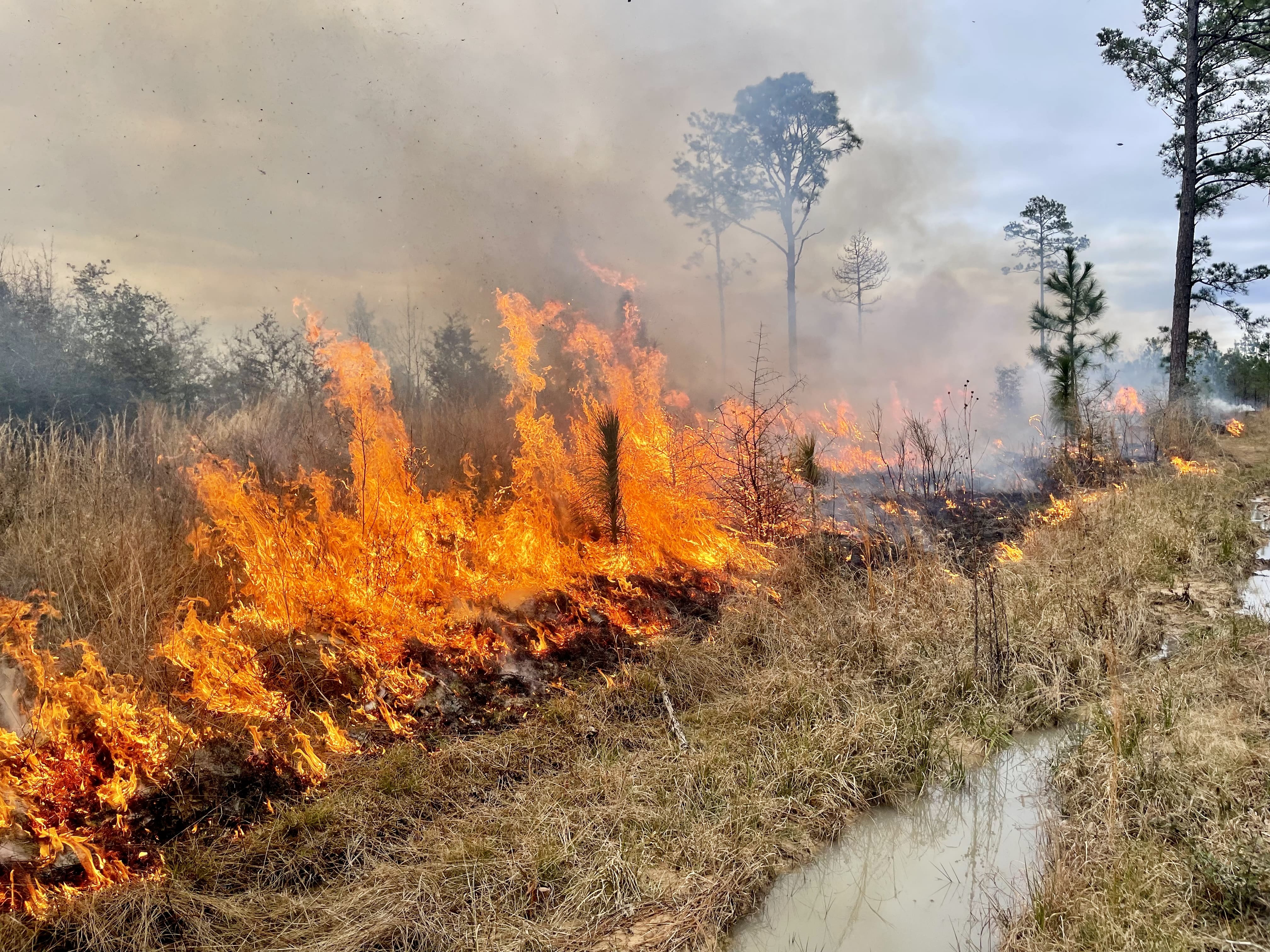
January 29, 2025
Prescribed burning promotes a healthy longleaf pine ecosystem at TNC’s CC Road Preserve.
The Nature Conservancy’s CC Road Savanna Preserve in Allen Parish warmed up quickly after the snow last week when a prescribed burn took place on 190 acres. This winter burn will help prepare the site for longleaf seedling planting, which will happen on 78 acres at CC Road in late February, said William deGravelles, TNC’s director of land protection and stewardship in Louisiana. “The burn top-kills or ‘knocks back’ the grasses, forbs and shrubs, giving temporary growing space to the seedlings so they can establish more easily and have a higher chance of survival.”
The prescribed burn and the longleaf seedling planting are funded by TNC’s Plant a Billion Trees campaign, a program whose goal is to restore forests across the planet.
TNC will do another prescribed burn soon at the Persimmon Gully Preserve in Calcasieu Parish in advance of more longleaf pine seedling planting on 84 acres. This burning and planting will help restore rare longleaf pine flatwoods savanna that are important for a variety of species of conservation concern, including the monarch butterfly, dotted blazing star and prairie warbler. It will also establish longleaf pine trees, which are more resistant to drought, hurricanes and pests than loblolly and slash pines commonly found in pine plantations, and thus will be more likely to sequester and retain carbon for periods well over 100 years.
More specifically, both CC Road and Persimmon Gully are being restored to Western Longleaf Pine Flatwoods Savanna, deGravelles said. These are flat, seasonally wet savannas with unique, scattered tiny hills called mima mounds.
Prescribed fire mimics low groundfires sparked by lightning and historically set by Native Americans, resulting in a sunlight-filled forest with meadows of grasses and wildflowers beneath open stands of tall pine trees.
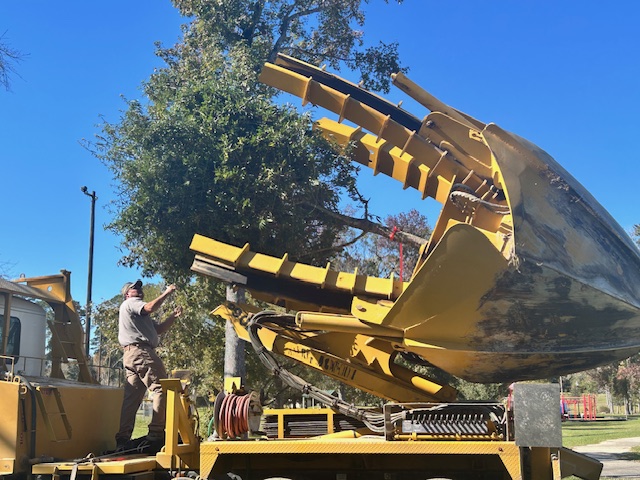
January 16. 2025
TNC Louisiana Treesilience plants 25 trees in DeRidder’s West Park.
When Hurricane Laura roared ashore in 2020, the City of DeRidder found itself in the storm’s crosshairs. The Category 4 hurricane pummeled DeRidder with more than 100-mile-per-hour winds, dramatically altering the look and feel of the small city, home to nearly 10,000 people.
West Park, DeRidder’s largest community park, lost 300 trees. But that was just the start.
“We lost hundreds of trees in Laura, but then as time went along, we lost at least 200 more that were dying from damage caused by the hurricane,” said Tommy Landry, DeRidder’s Director of Public Works. “And they’re still dying today.”
Replacing that many trees is a tall order for a city of DeRidder’s size, but letting the urban canopy remain bare wasn’t an option, Landry said.
“I had been trying for about a couple of years to find grants and programs that could help us put trees back in,” he said. “It seemed like everywhere I went was a dead end except for one small grant we got from Keep Louisiana Beautiful.”
Then Landry, through the Louisiana Main Street Program, learned about The Nature Conservancy’s Louisiana Treesilience Program. Funded by a three-year grant from the USDA Forest Service, LA Treesilience is working to replace hundreds of damaged and lost trees in areas that were devastated by hurricanes in 2020 and 2021, and to create a front-line defense for urban areas in the face of severe weather. Treesilience works with local governments, non-profits and communities of all sizes, especially in underserved areas.
The program meets directly with community members to learn about their specific needs and desires to restore their urban tree canopy. Then, LA Treesilience not only funds the project, but also oversees all contracting and work to ensure its success. This approach means that the local community does not need to spend crucial staffing and resources to manage the grant.
In DeRidder’s West Park, LA Treesilience, managed by Amanda Takacs, community forest conservation coordinator for TNC Louisiana, made a $64,000 investment, planting 25 large cypress, willow oaks and live oak trees, all of which were 8 to 12 years old. It also removed 10 large dead or damaged trees, which could have been hazardous in the popular park, home to walking trails, a pickleball court, a swimming pool, ball fields and picnic areas, Landry said.
Of that $64,000 investment, DeRidder didn’t have to pay a dime.
Grown and transplanted by Wilkinson Tree Farm in Iowa, La., the new trees were planted with a high-tech spade truck, which looks like a giant claw machine from an arcade. Large enough to be an instant addition to the park’s tree canopy, the trees have impressed city residents, Landry said. “It’s awesome. I can’t tell you how many people have complimented the new trees,” he said. “Treesilience is a true blessing.”
Even before TNC started working with DeRidder, the city was putting its own funding toward restoring the hurricane-damaged municipal tree canopy. “We started budgeting to put in 25 trees a year, which is a hefty cost for our taxpayers, but we know what that investment will mean for the city,” he said. “We spent $50,000 for 25 trees; the trees were $2,000 each, each with a six-inch diameter base. We did not want to waste time with little bitty trees. We needed to get our shade canopy back in the park.”
Combined with LA Treesilience’s plantings, the city has added a total of 80 new trees in West Park in two years, including five provided by the Keep Louisiana Beautiful grant.
“The park is full of people every morning, with the walking trail and the pickleball court,” Landry said. “To bring children out to play, if there are no shade trees, they won’t stay long.
Takacs has worked closely with Landry through every step of the process. “She has been great to work with,” he said. “She lets you choose everything and then she makes it happen. It’s a big burden off of any city.”
Landry sees this work as a long-term investment in his community. “I am about to have my first grandchild,” he said, “and when she gets old enough to go to the park, I want her to know that her grandfather worked to plant these trees.”
